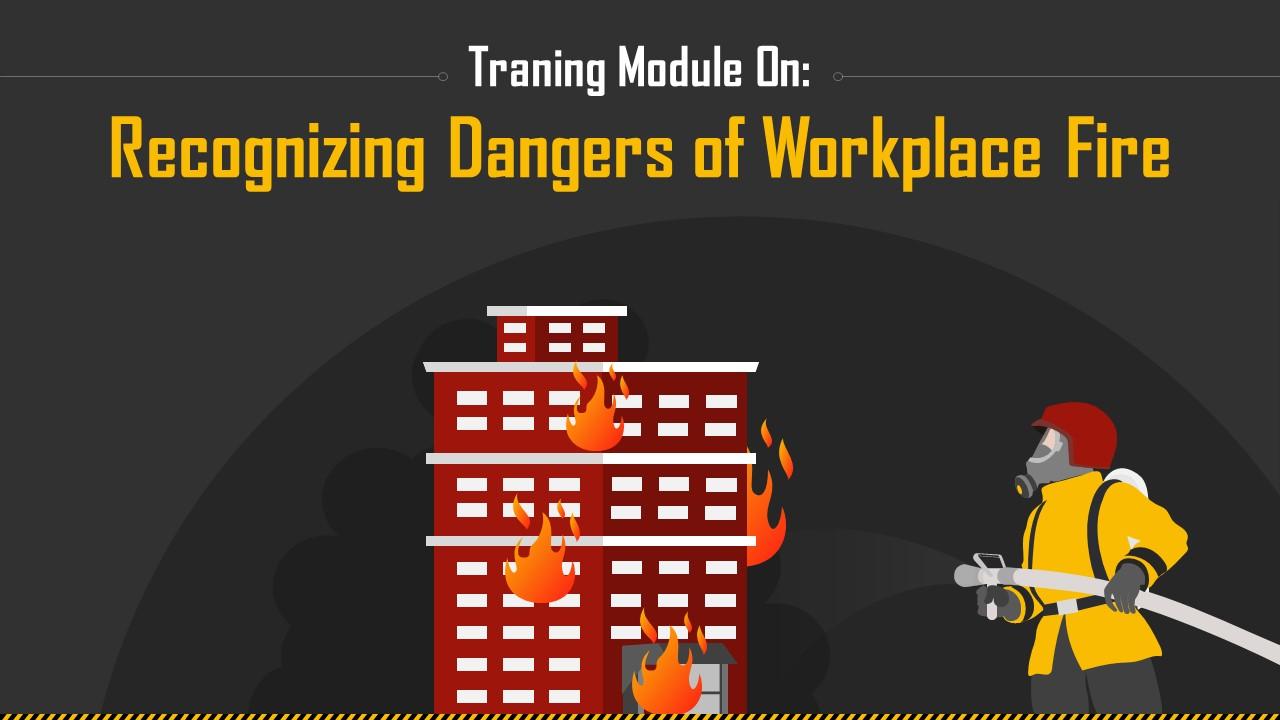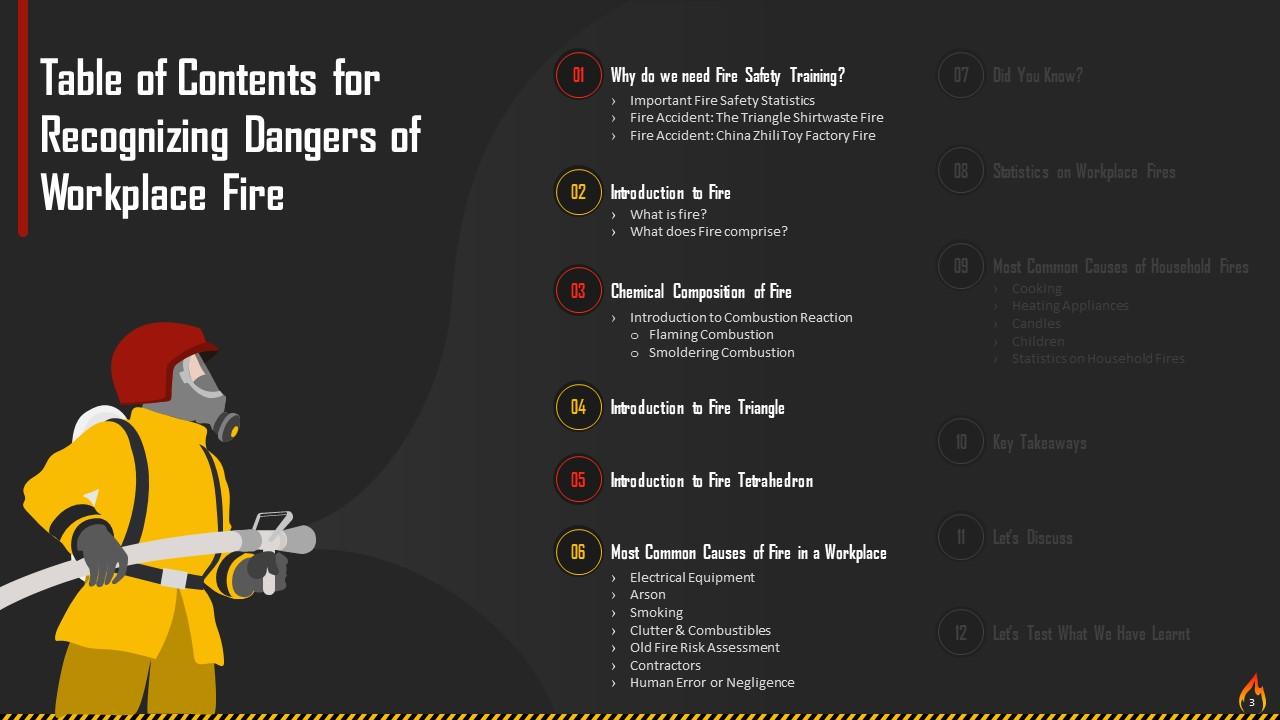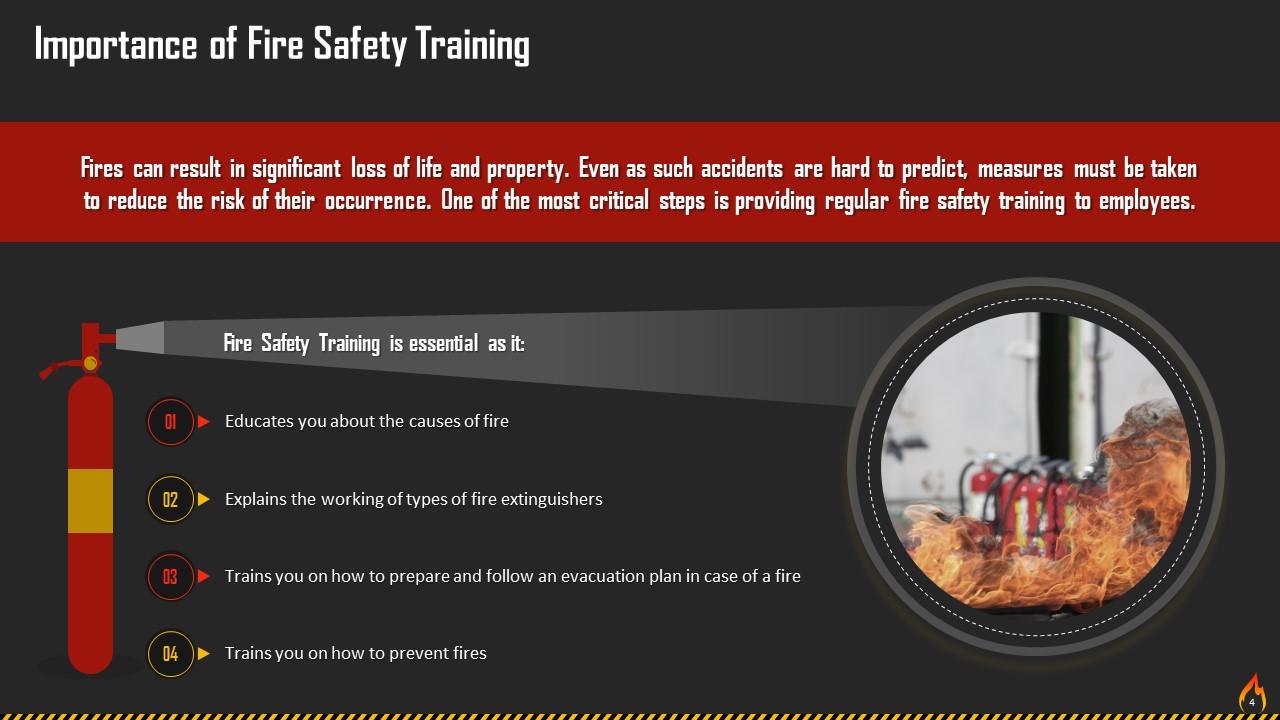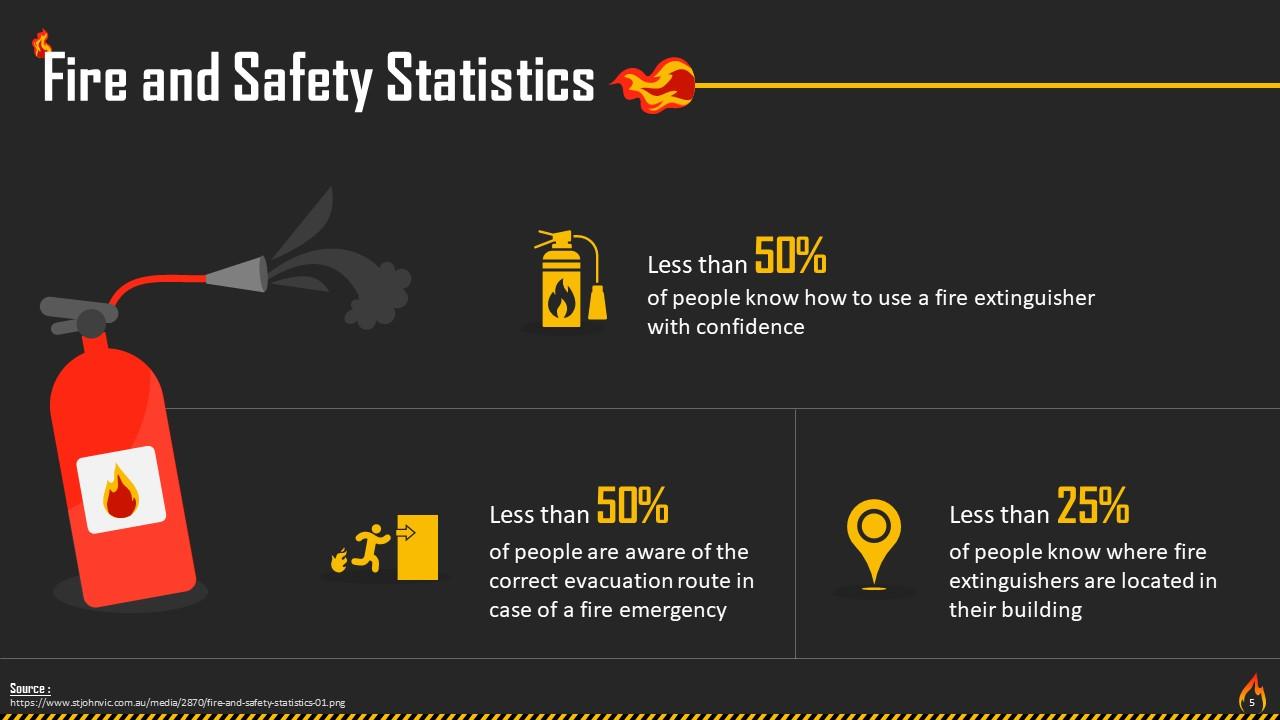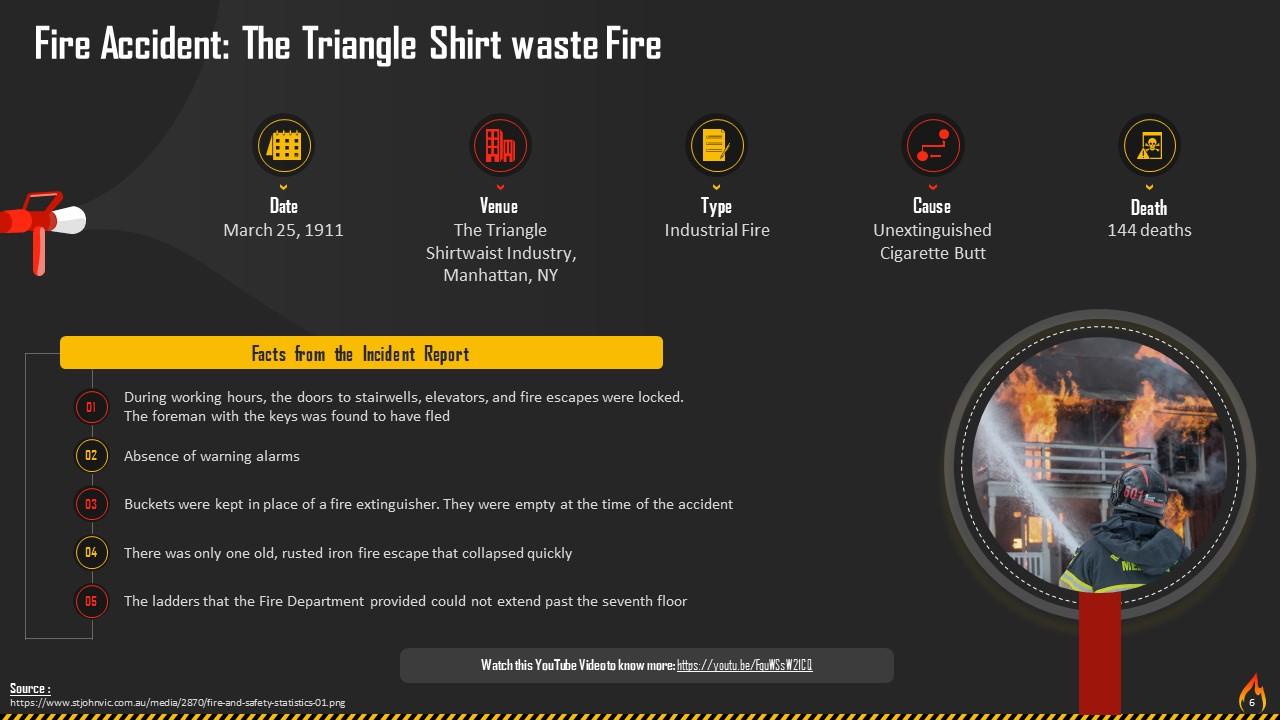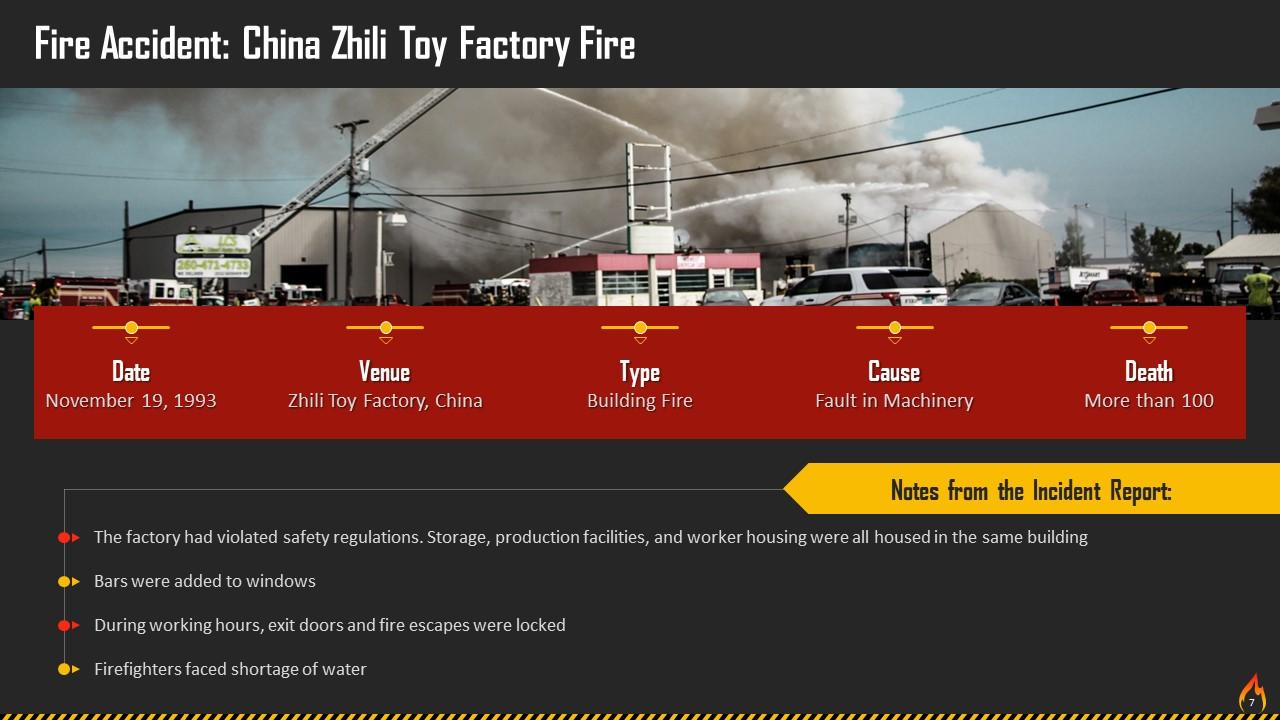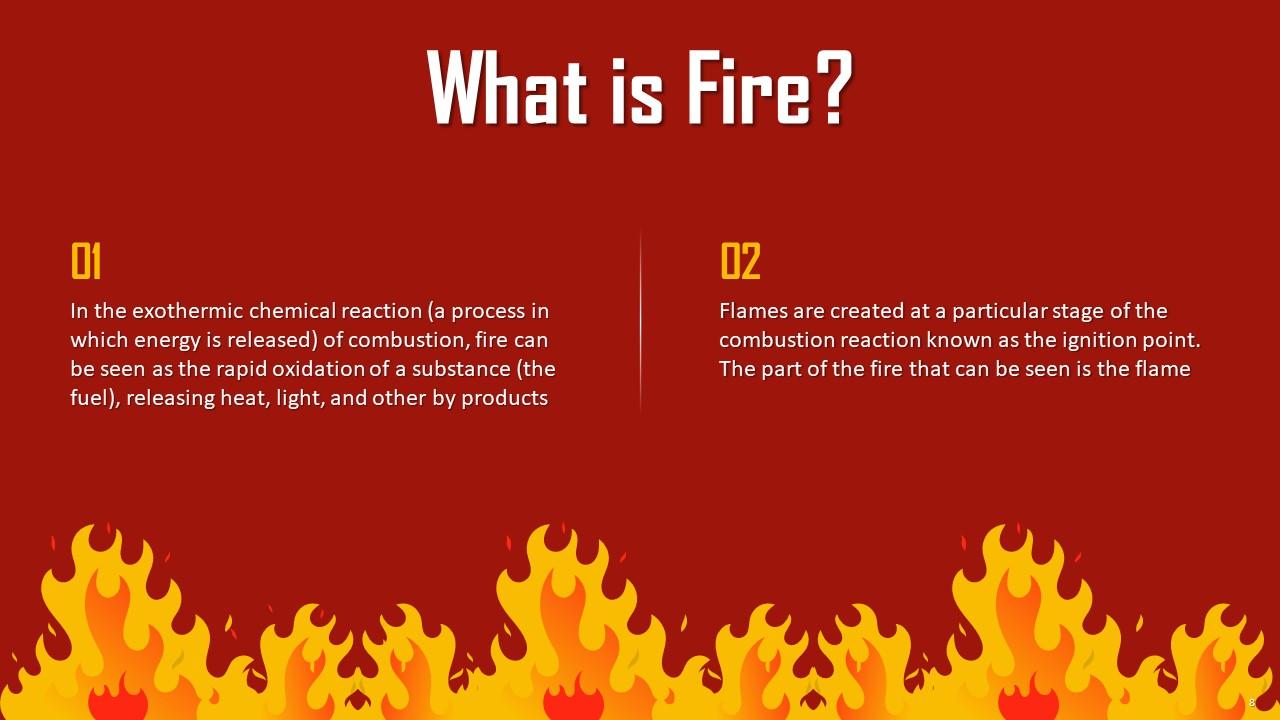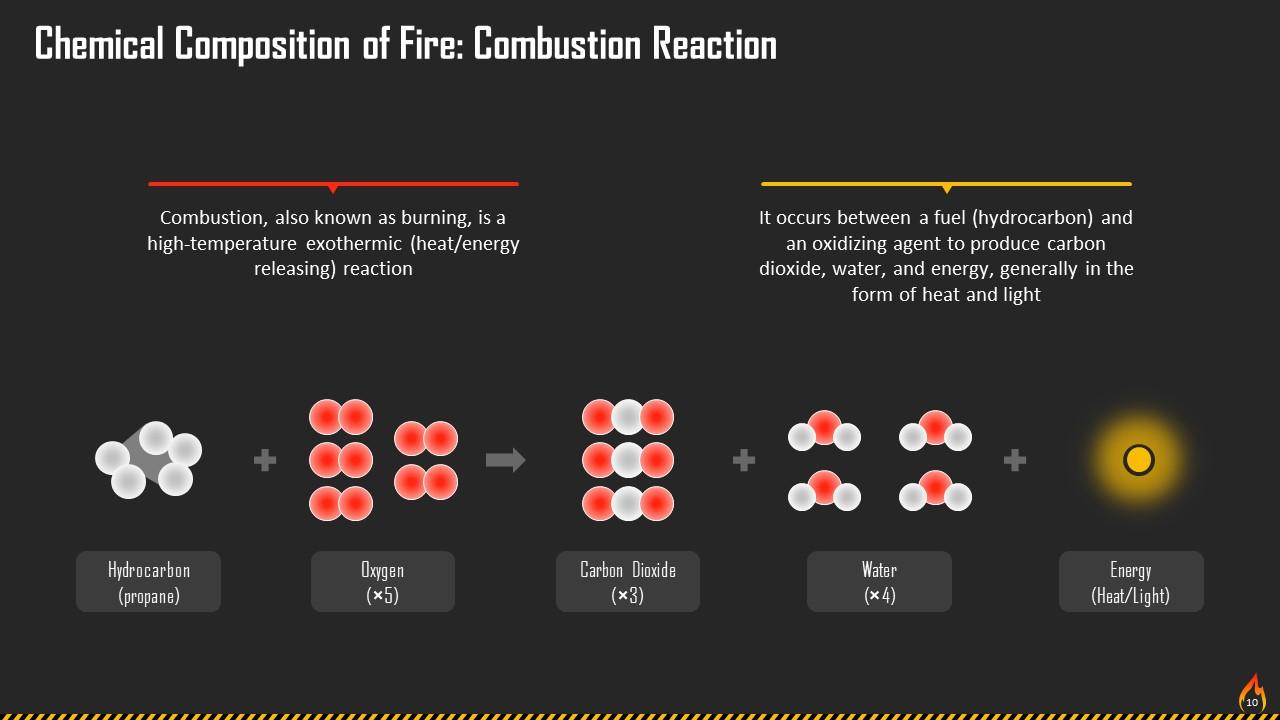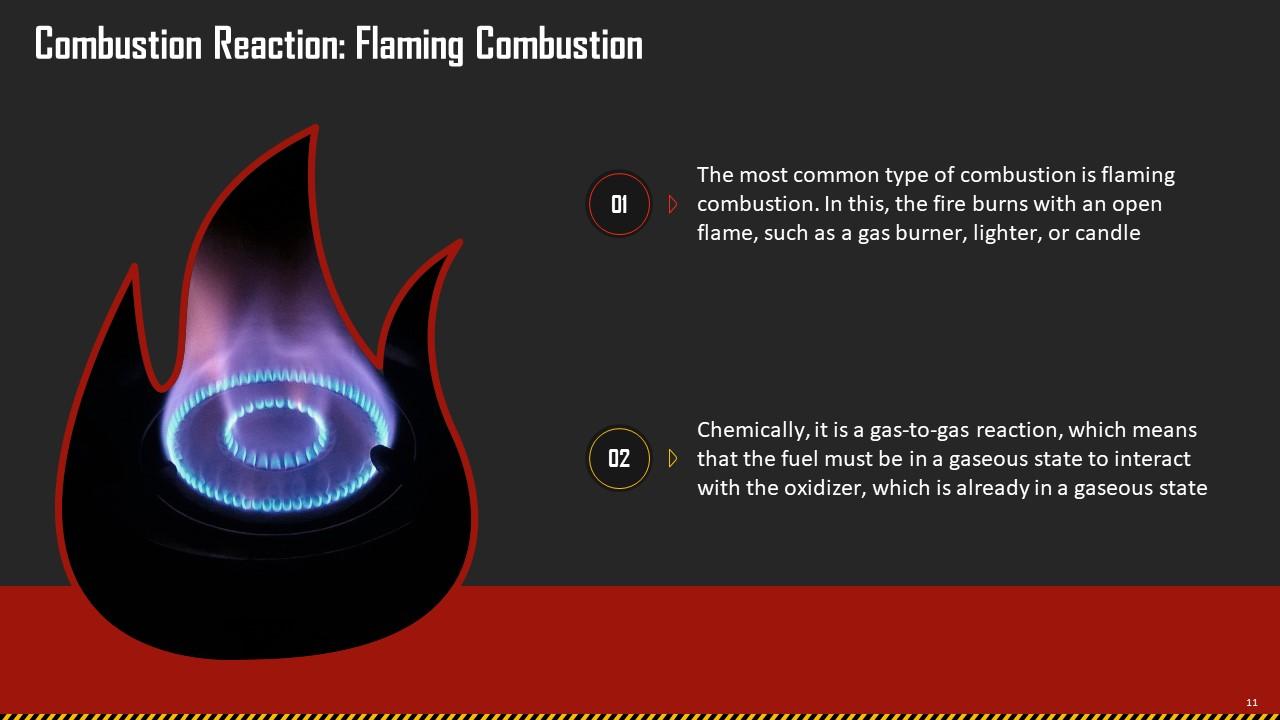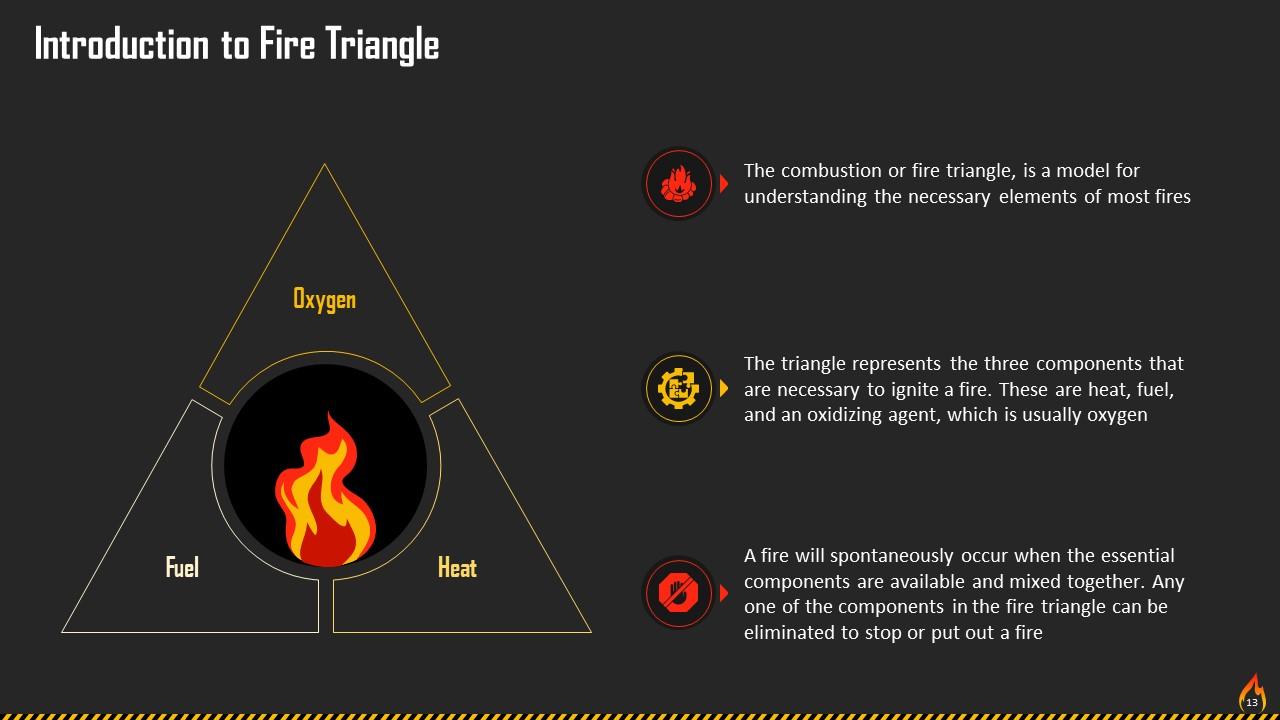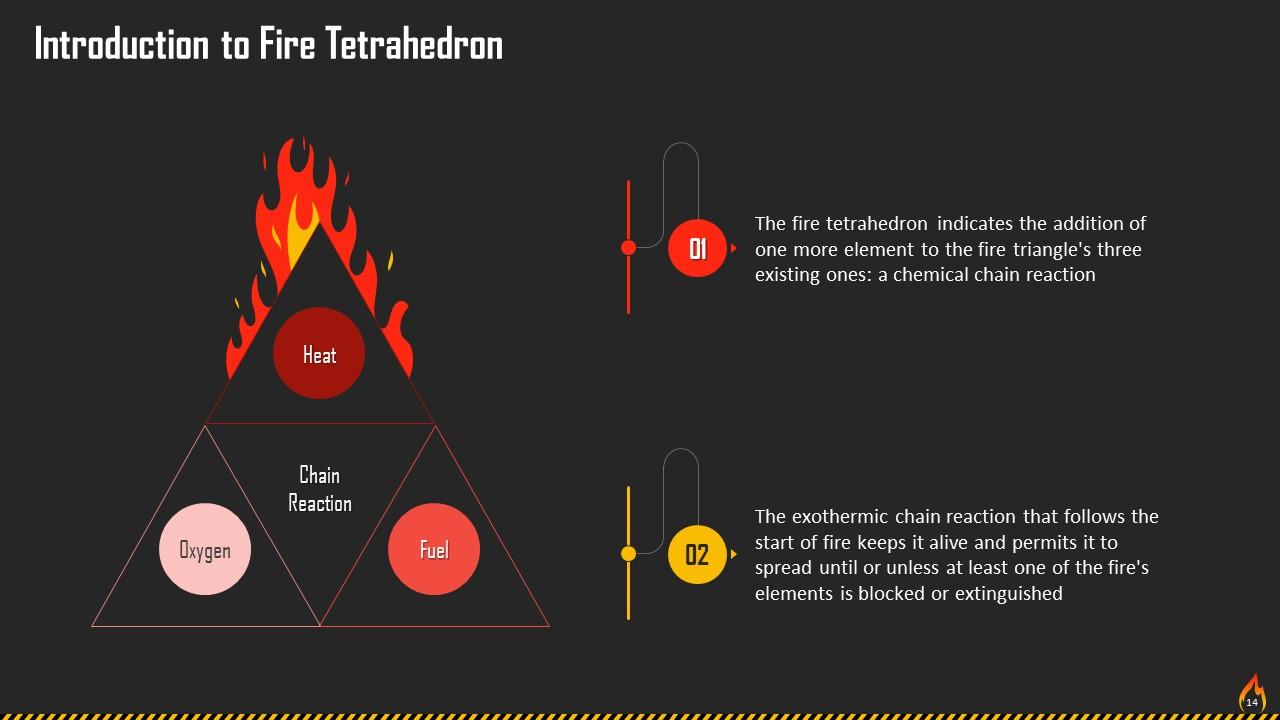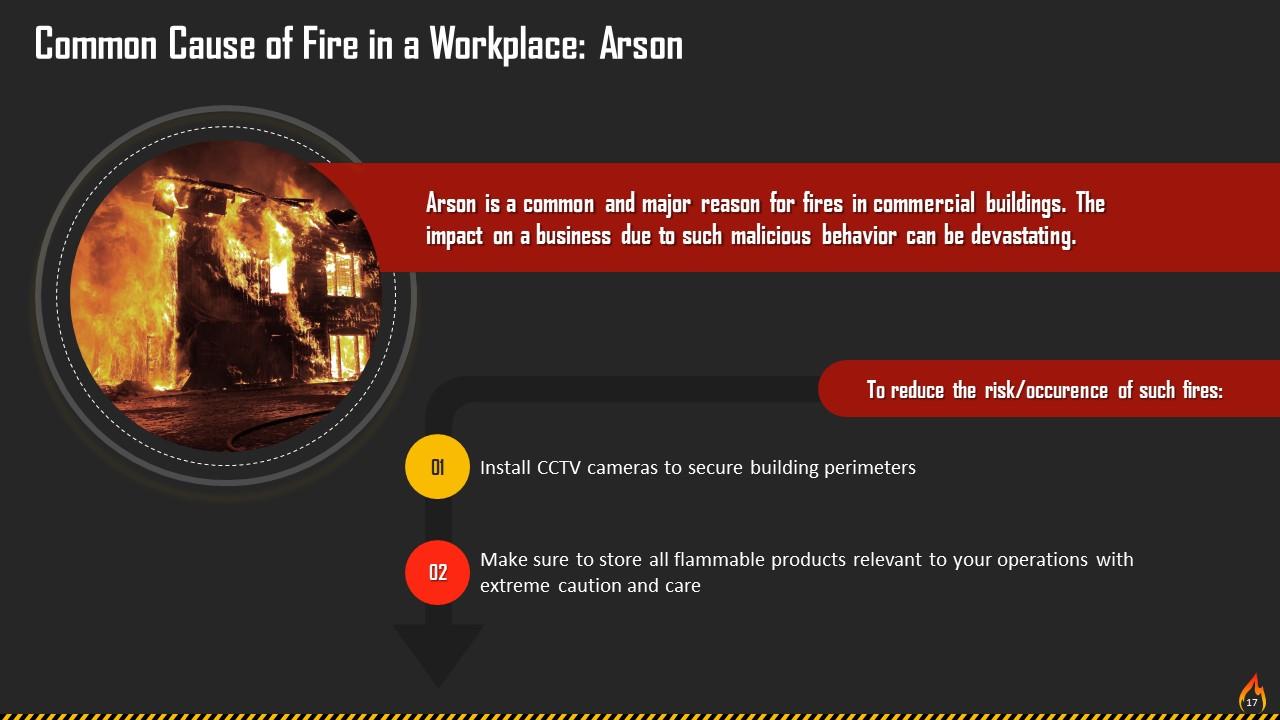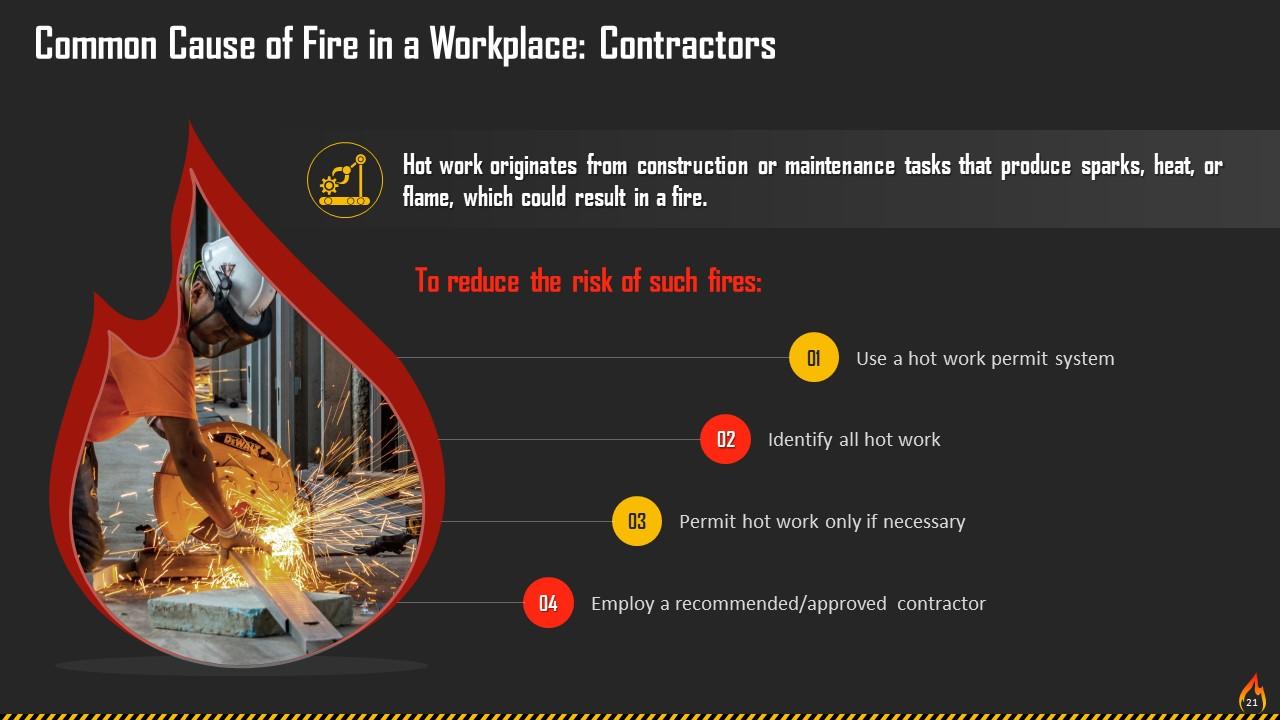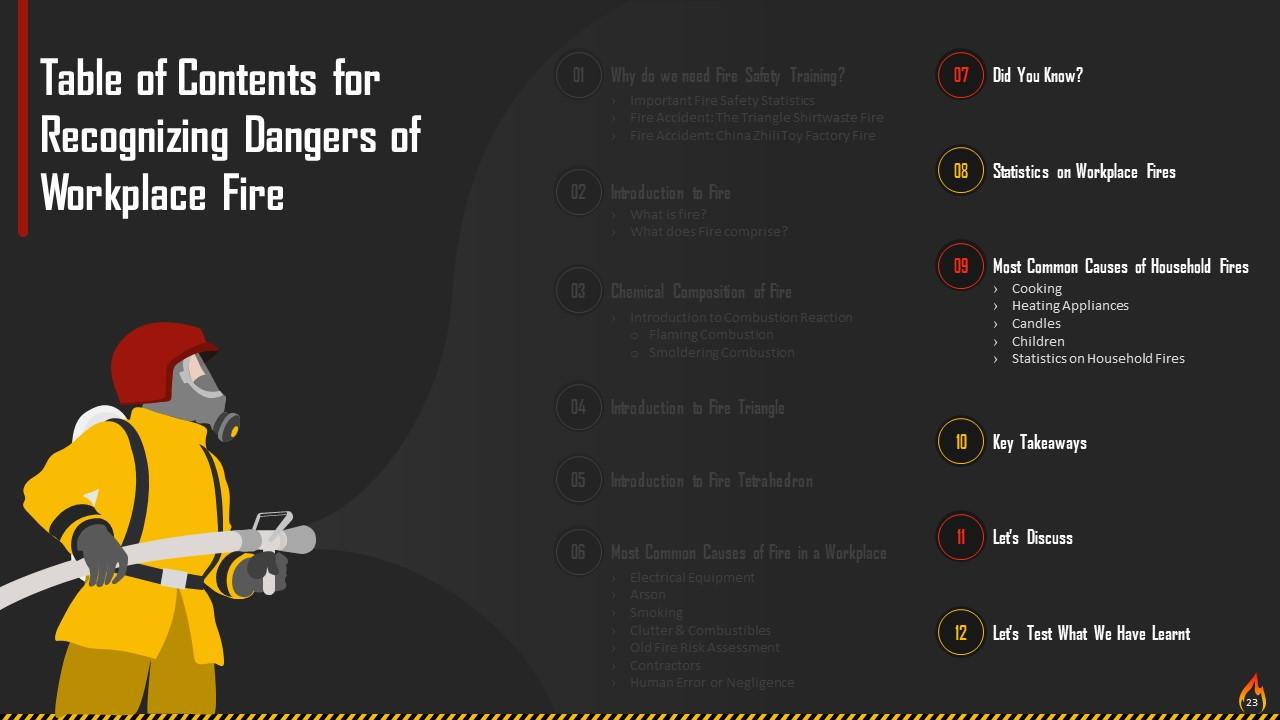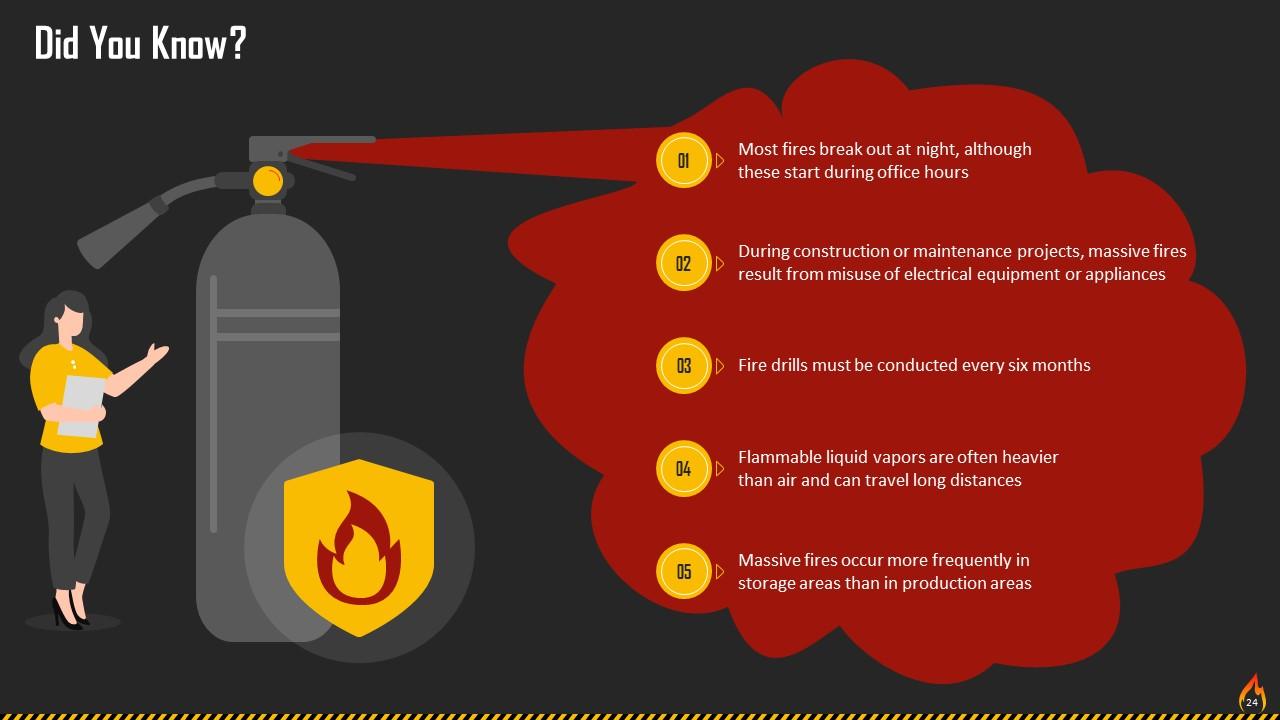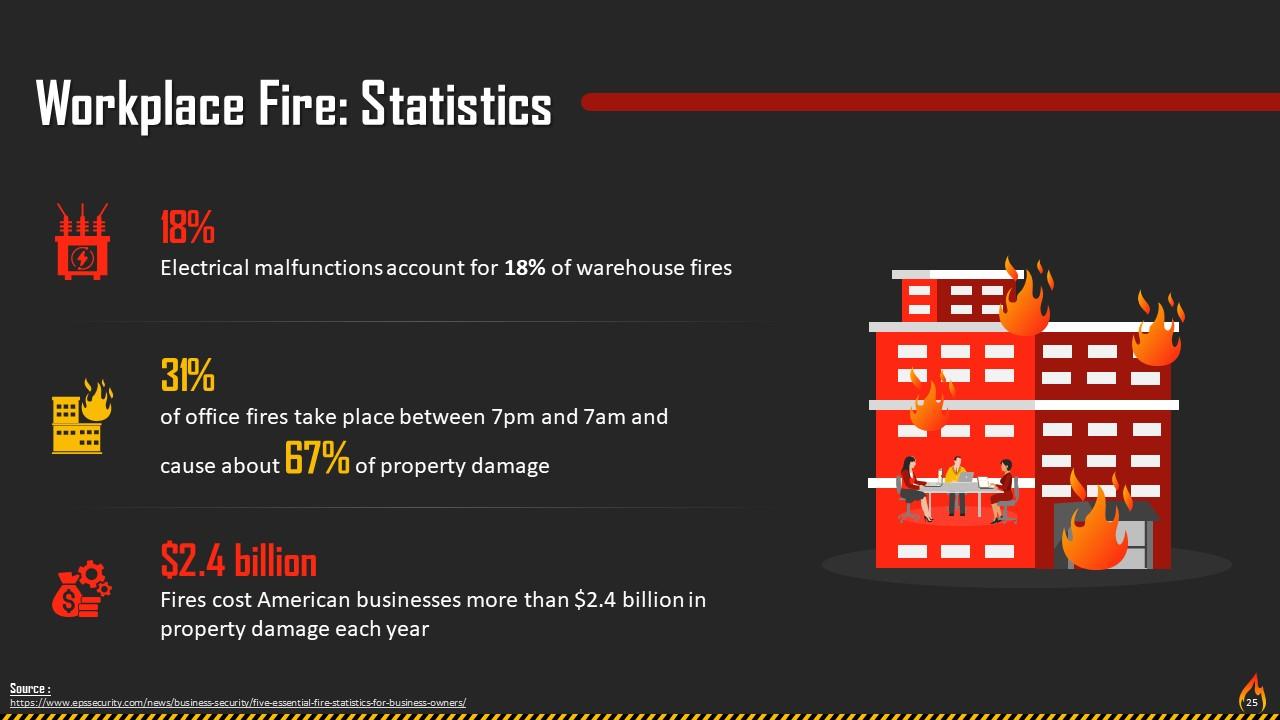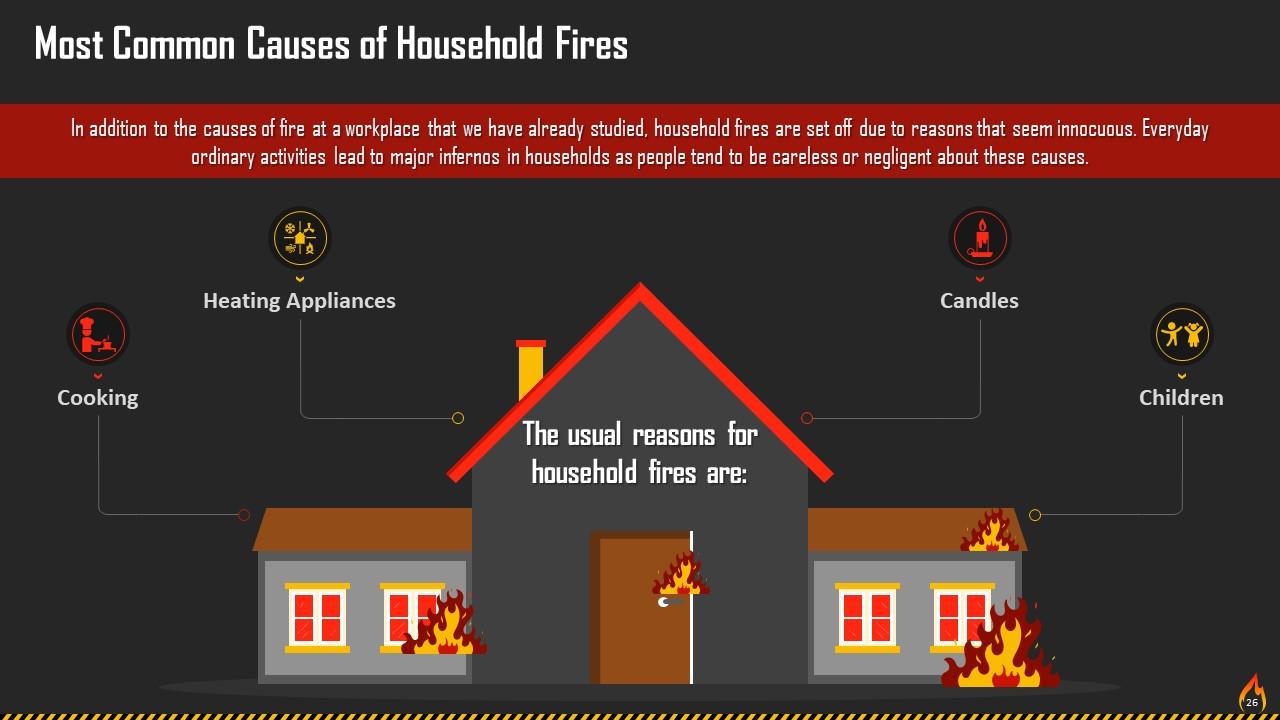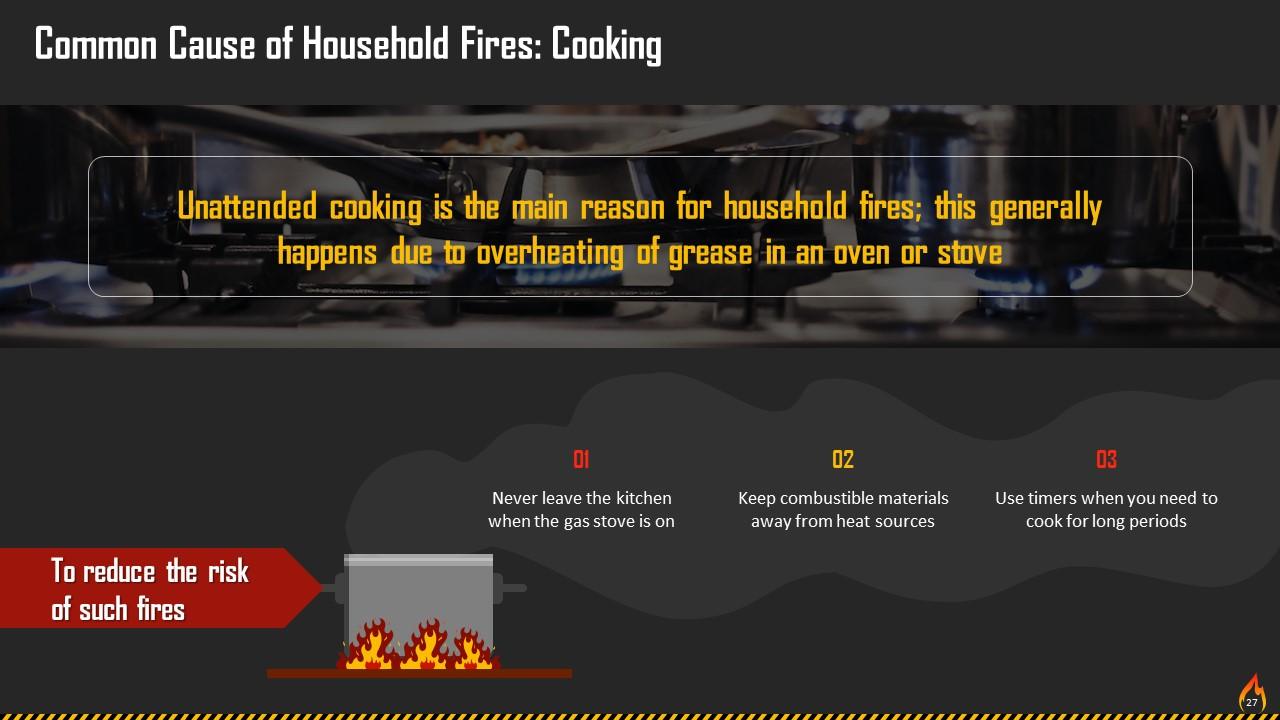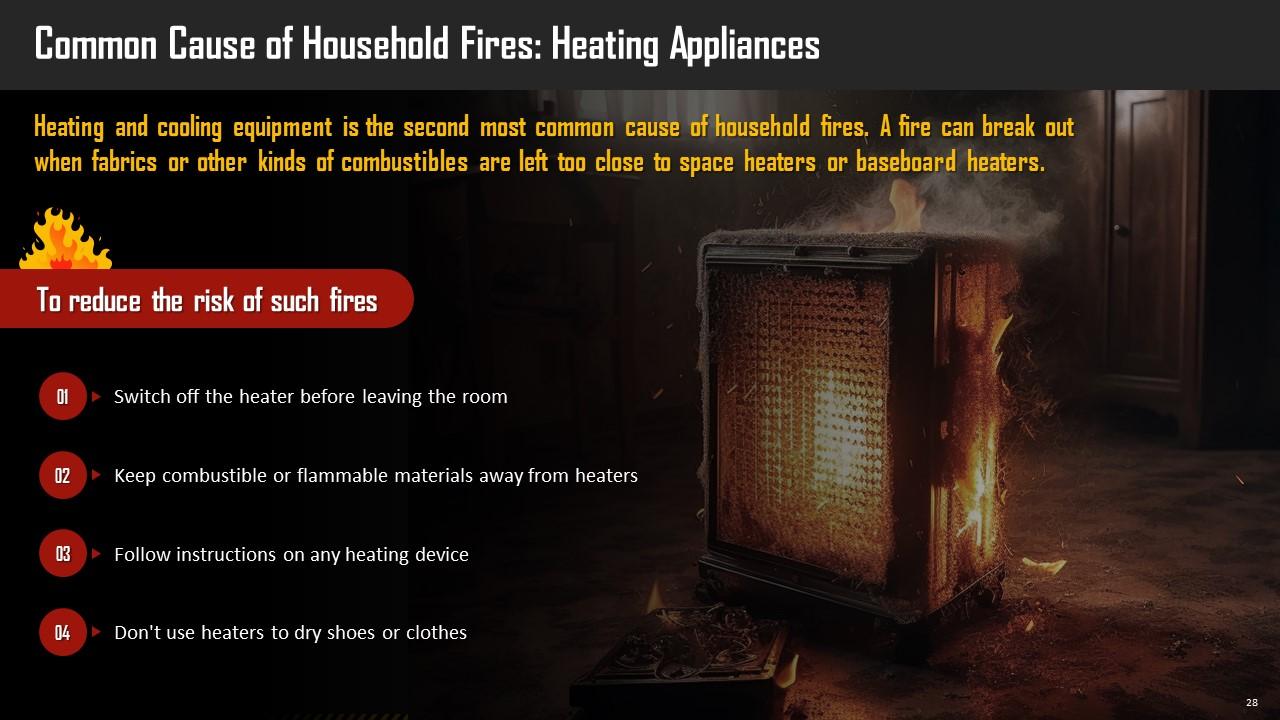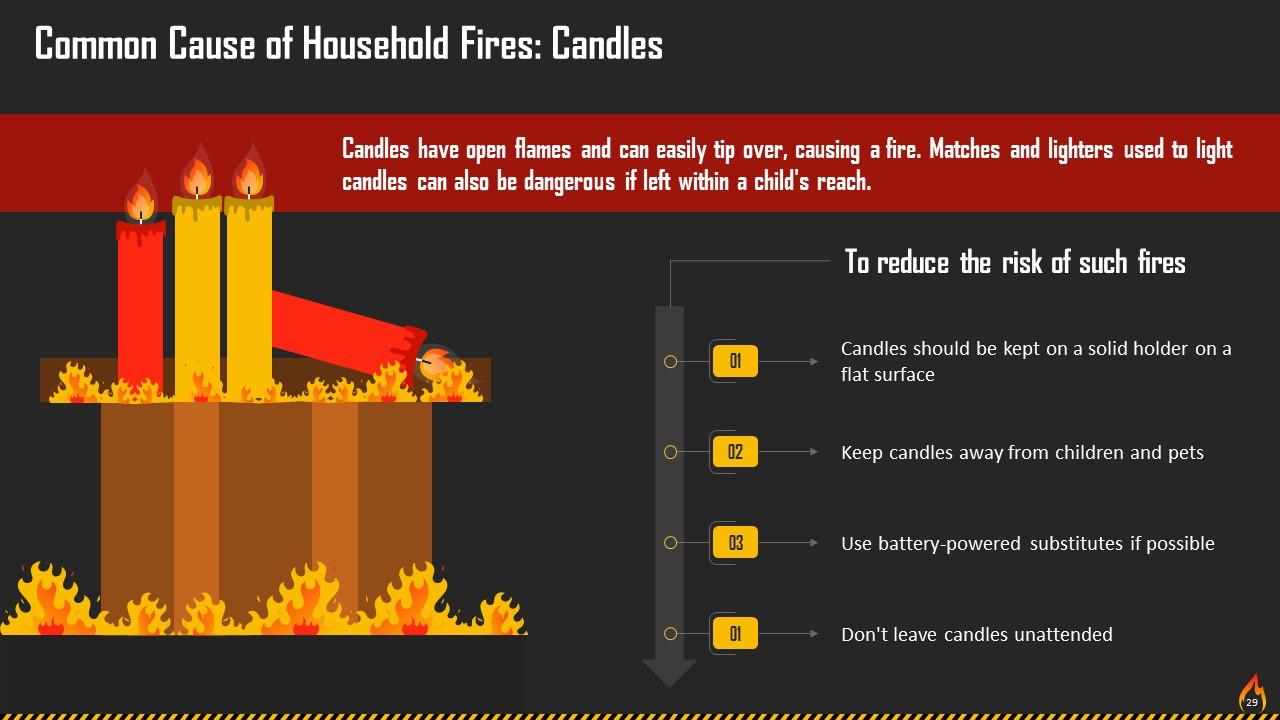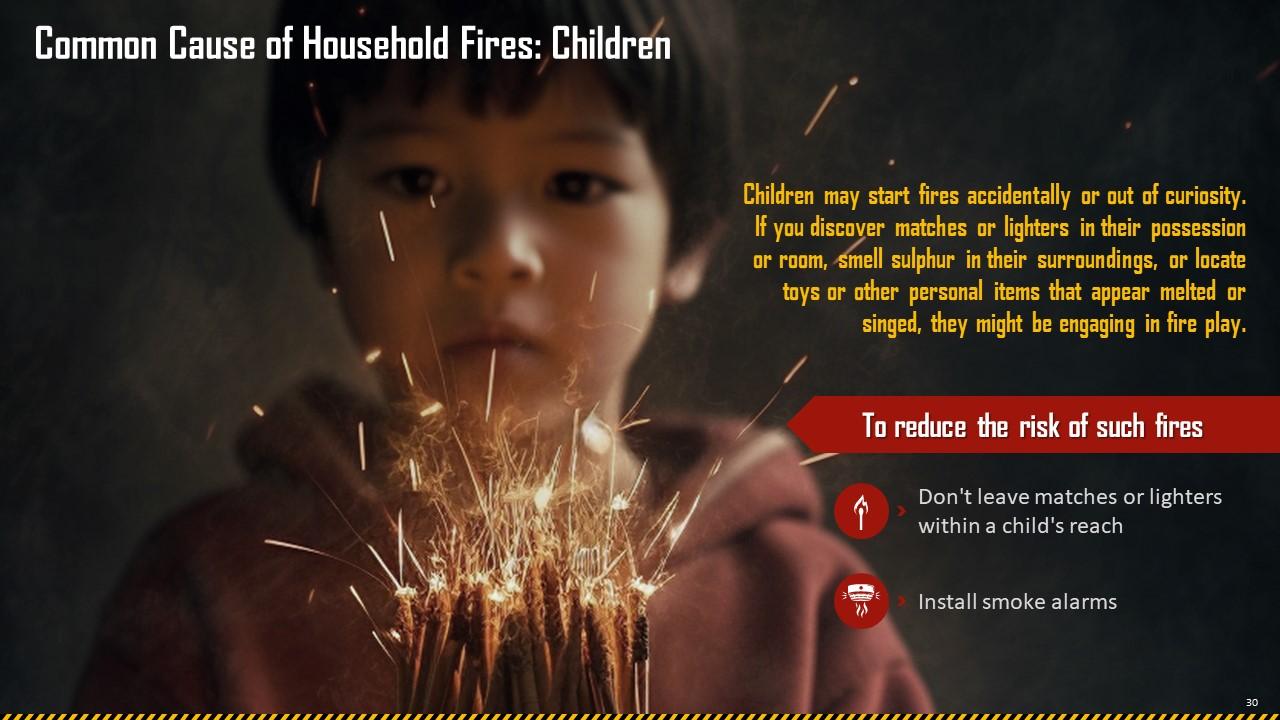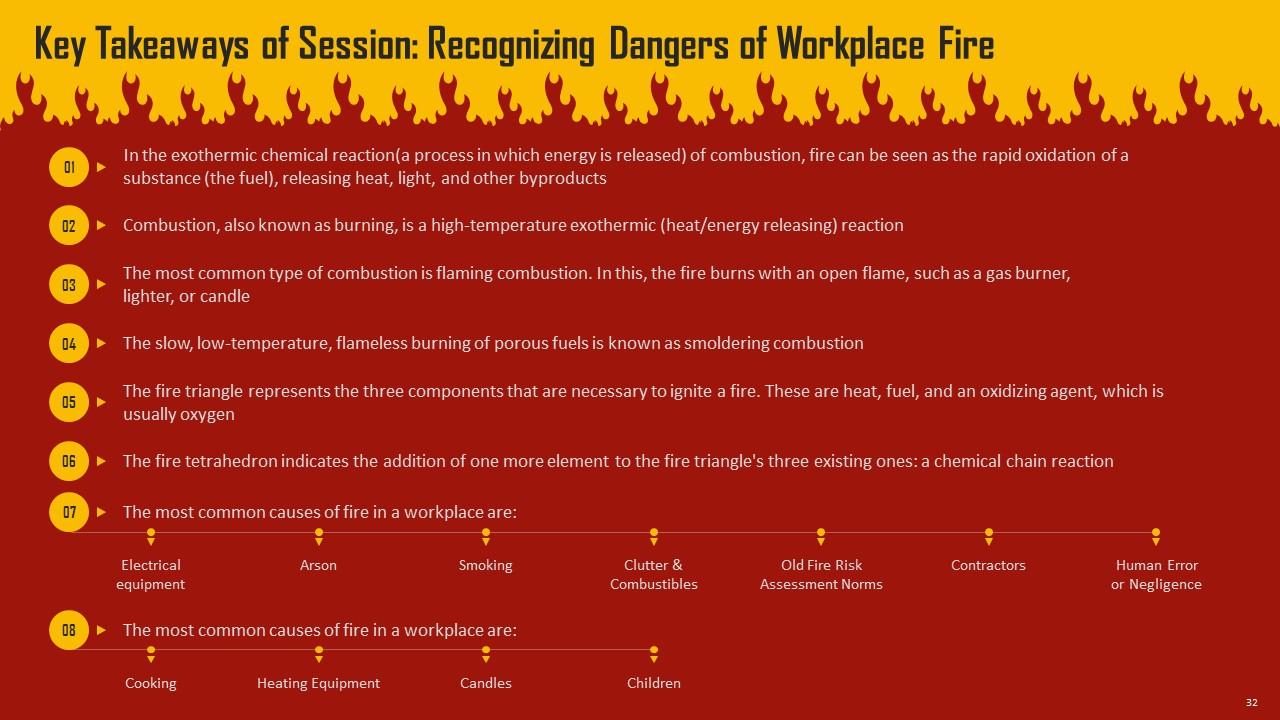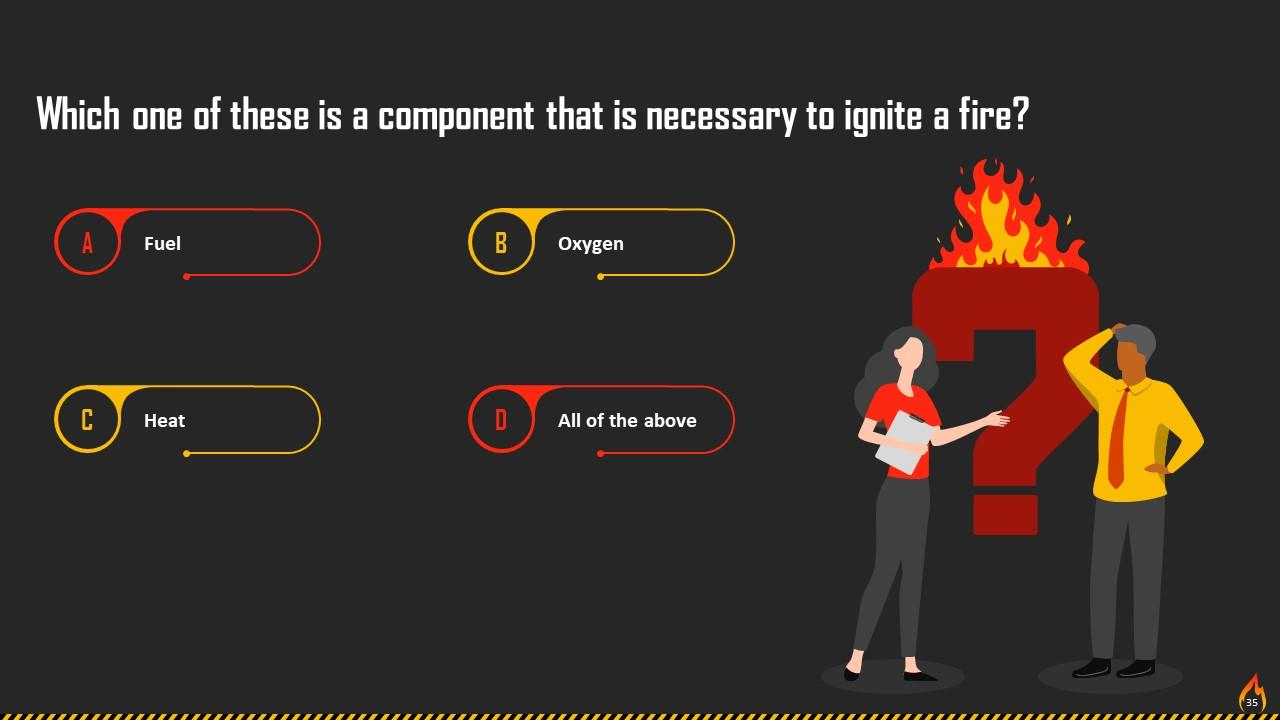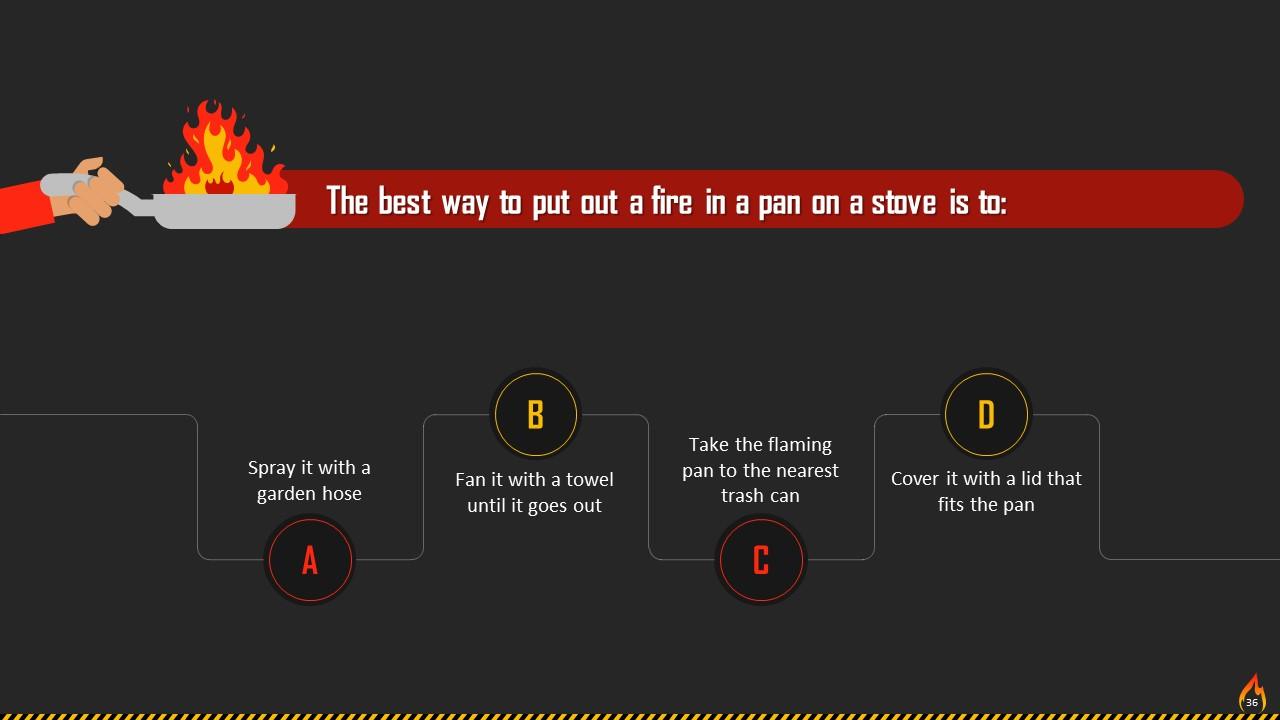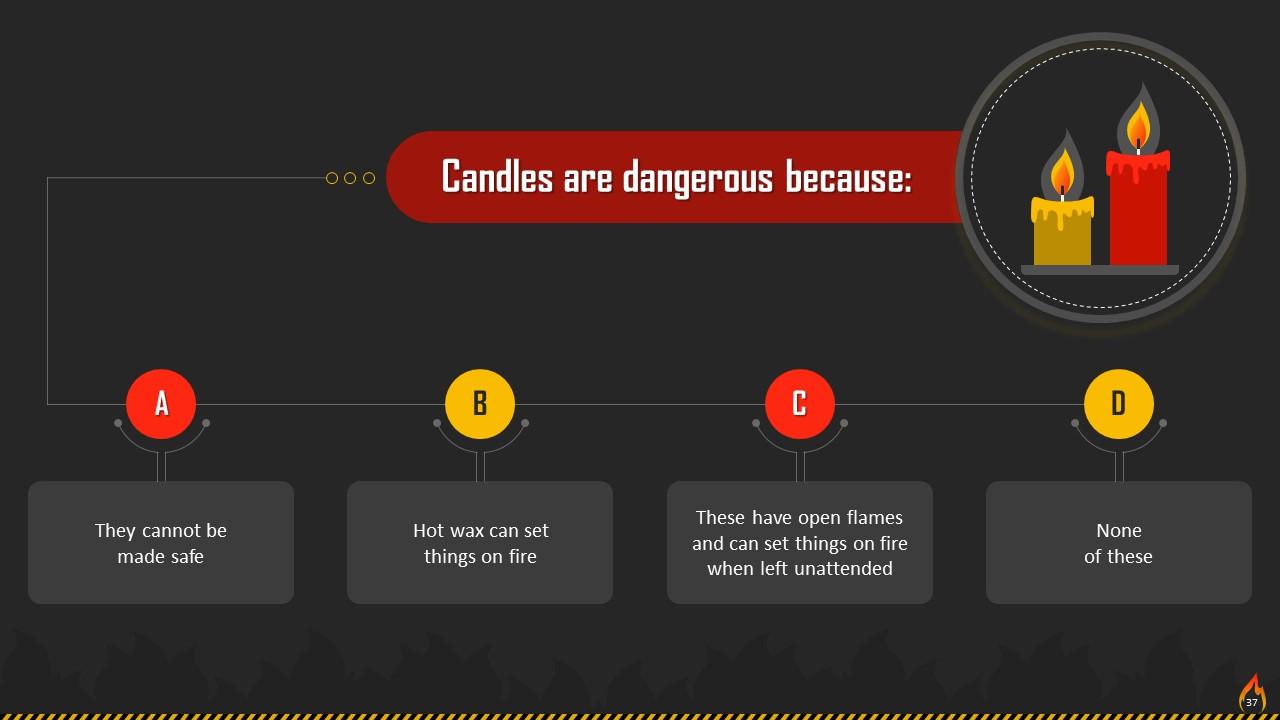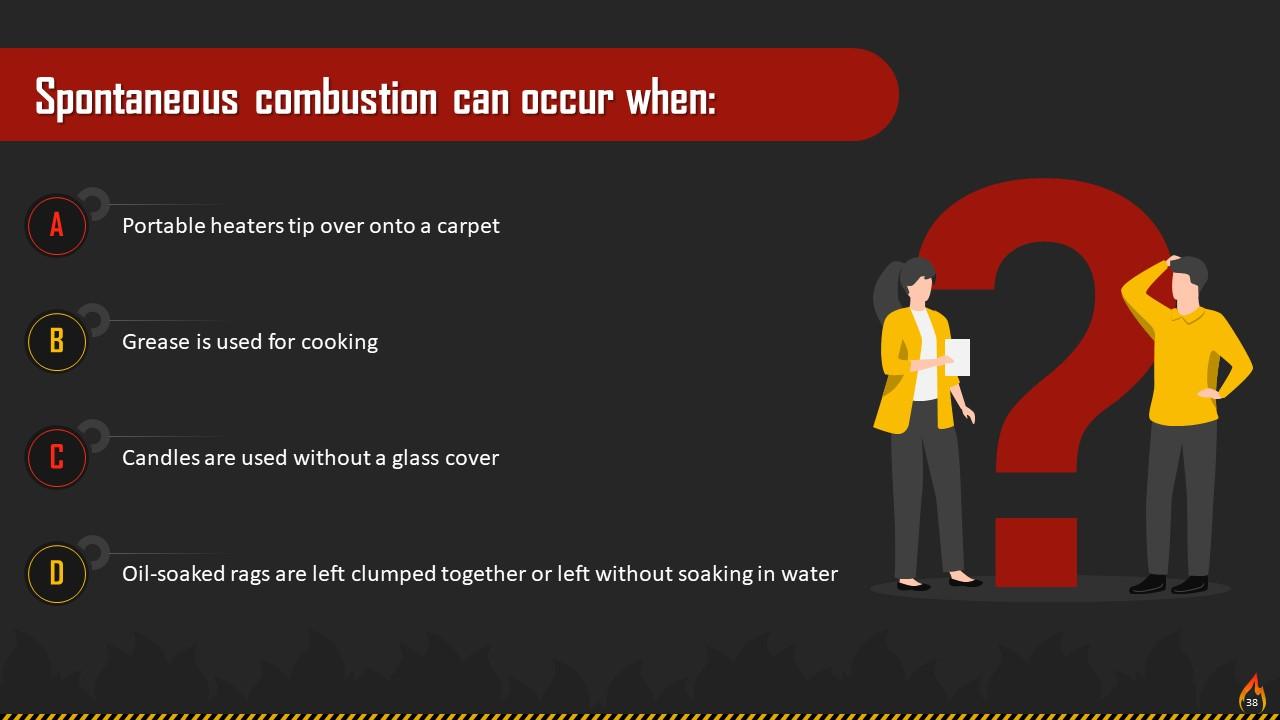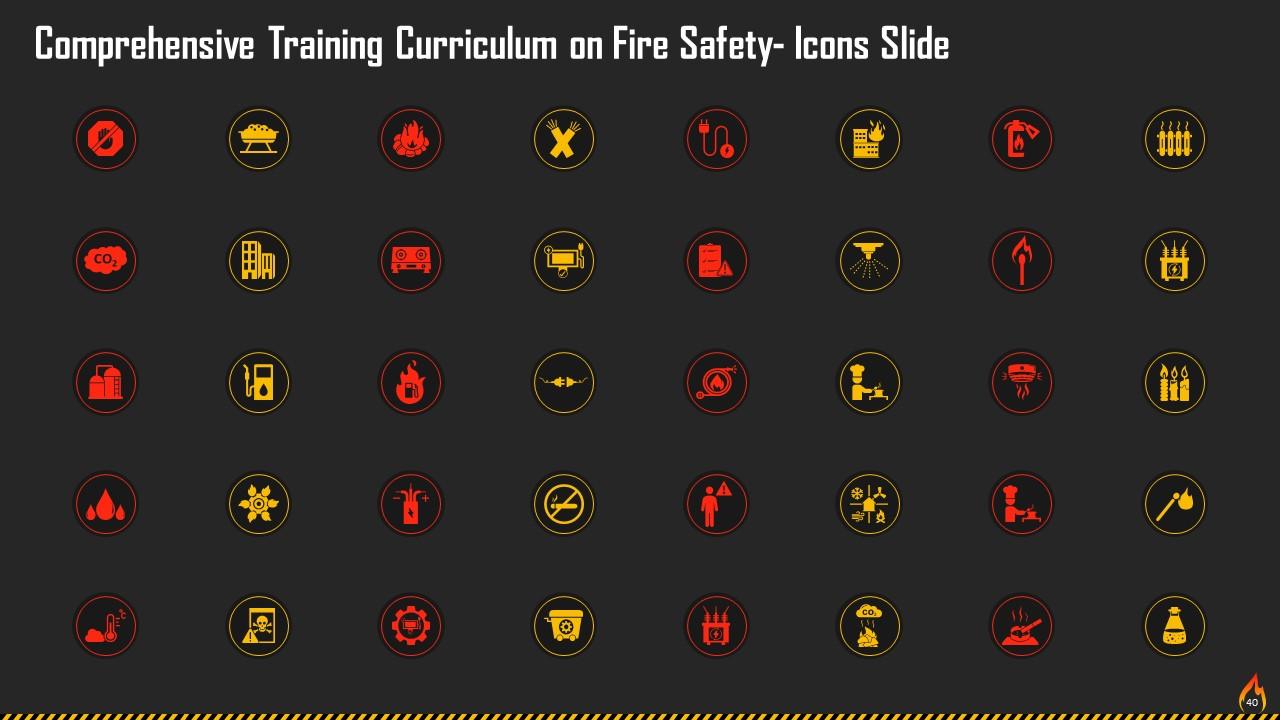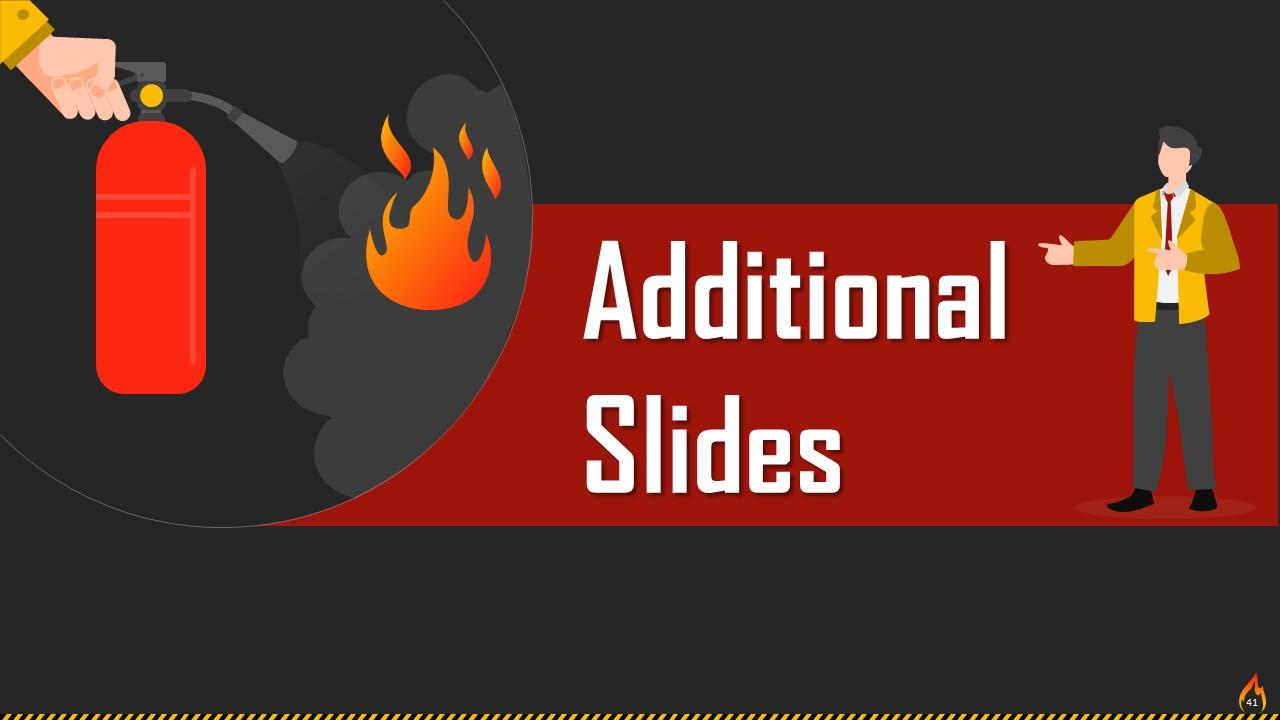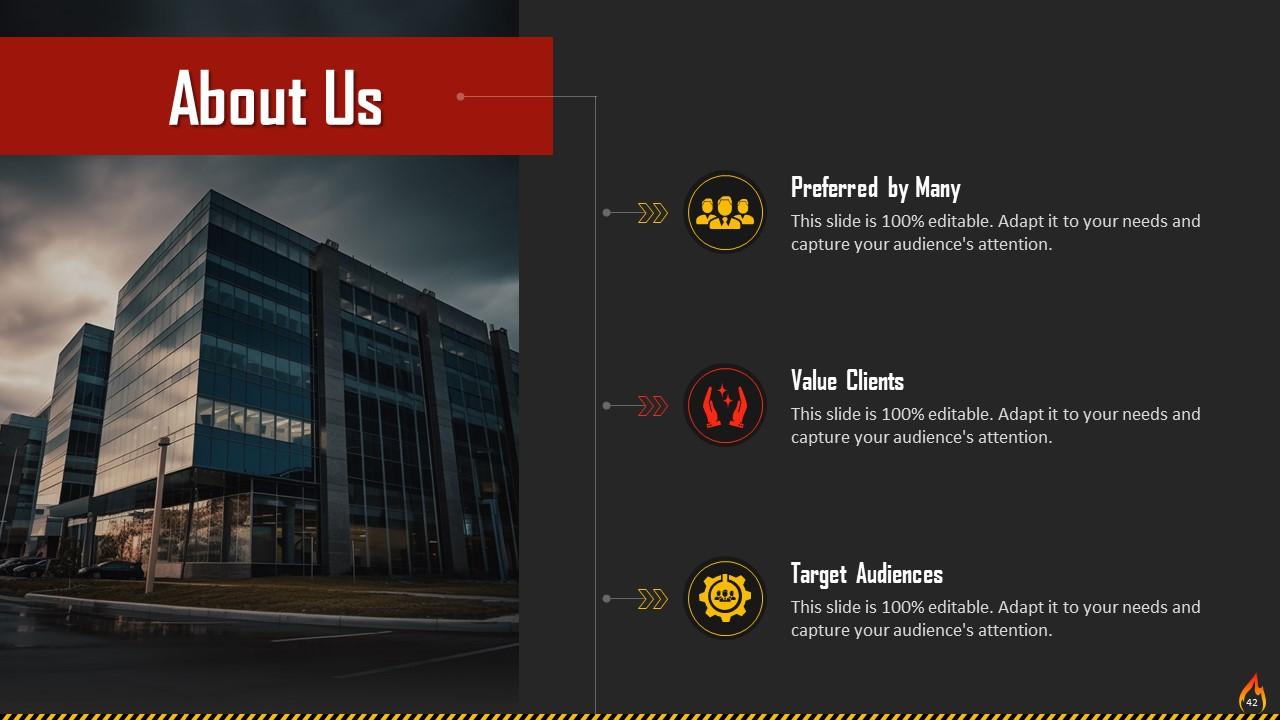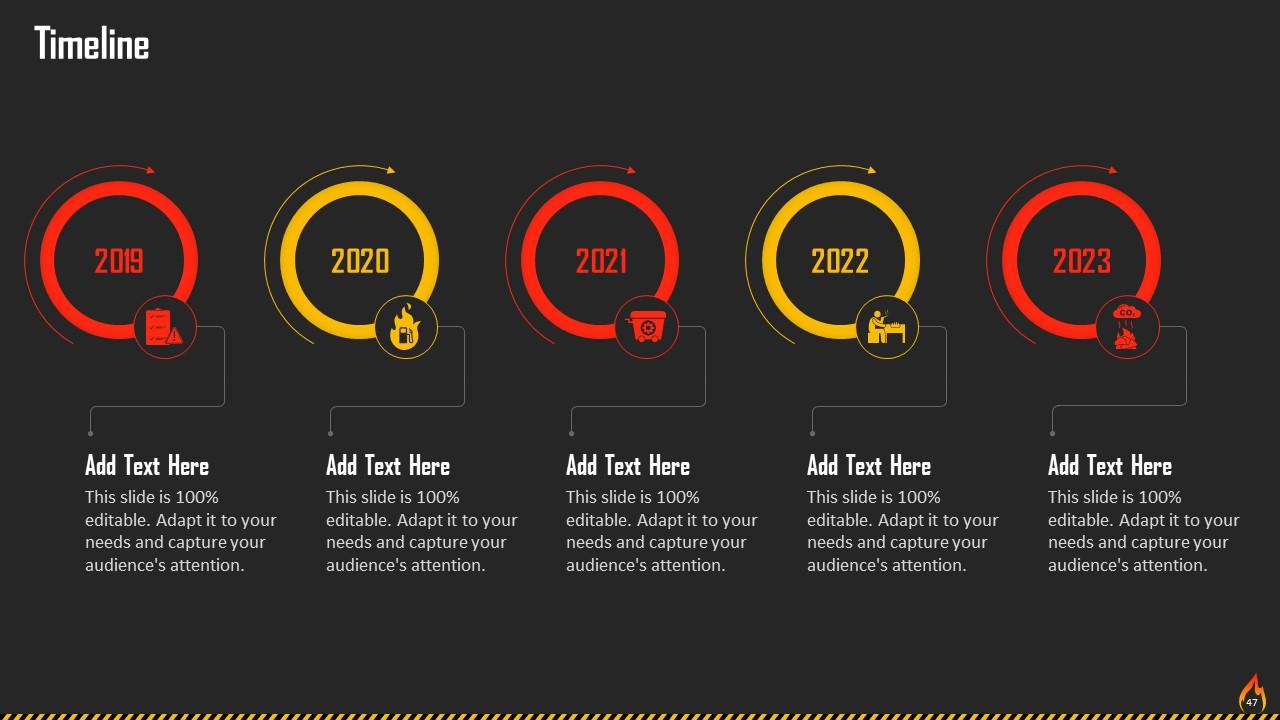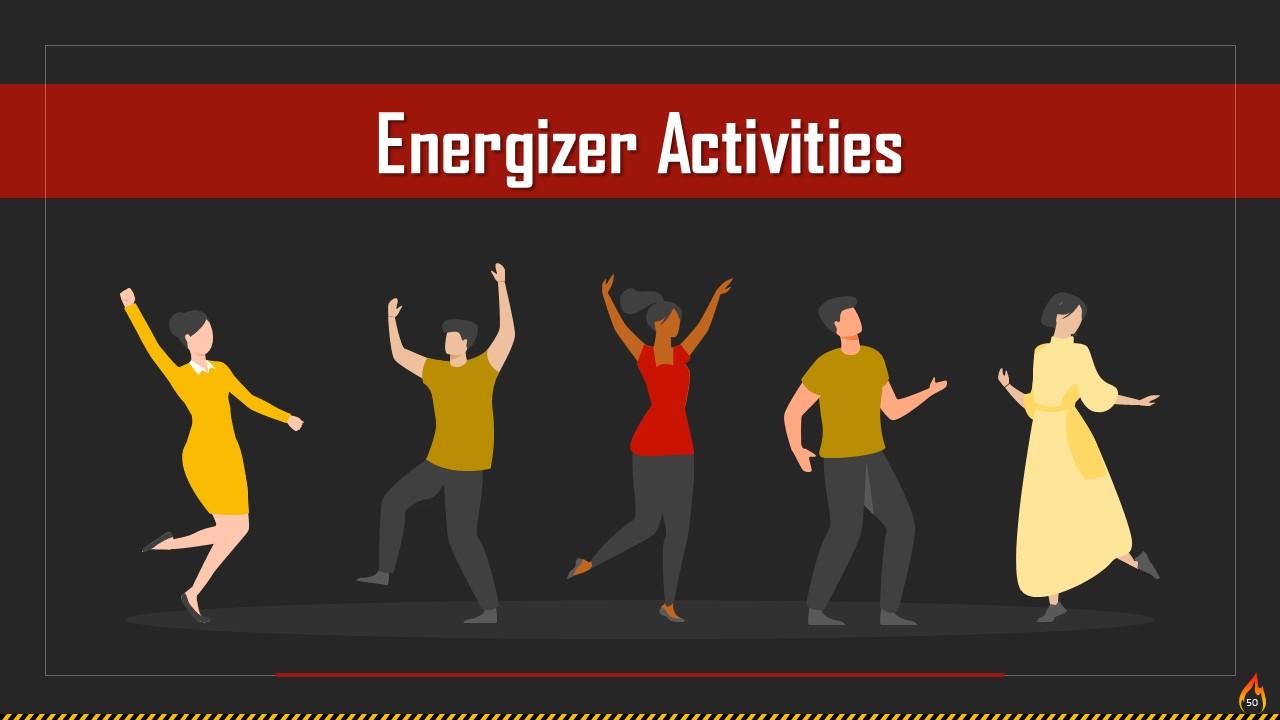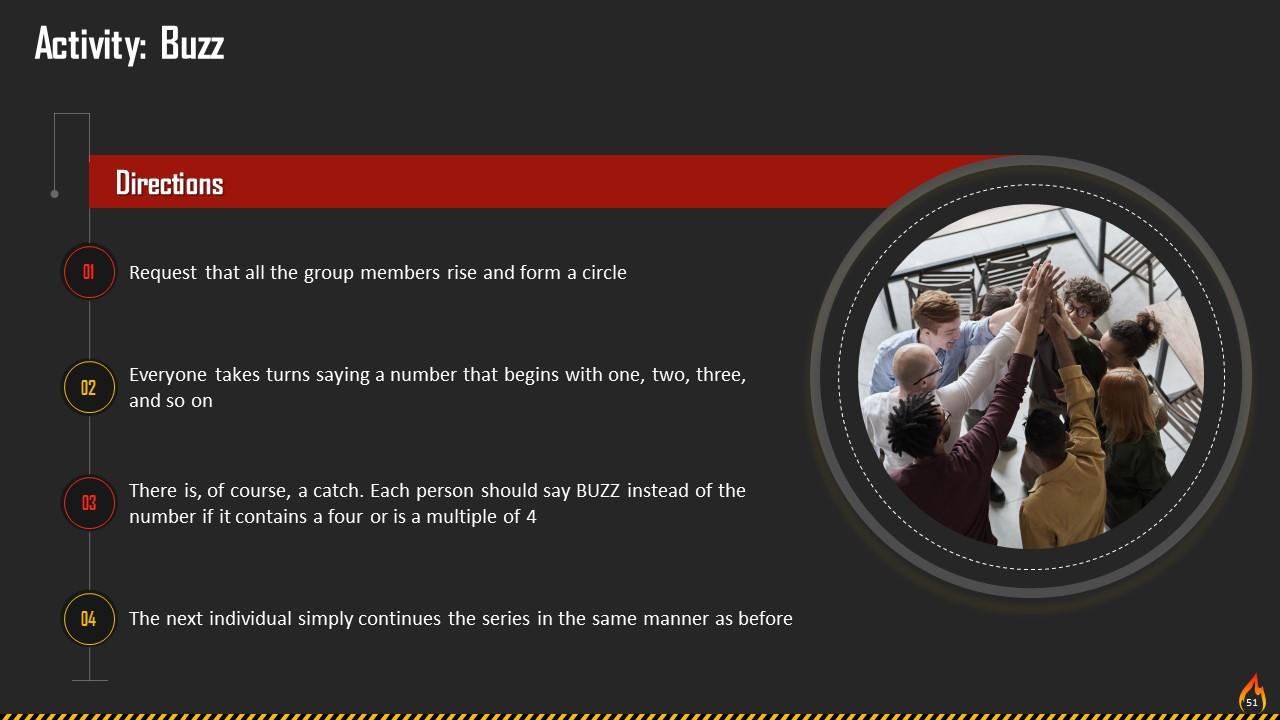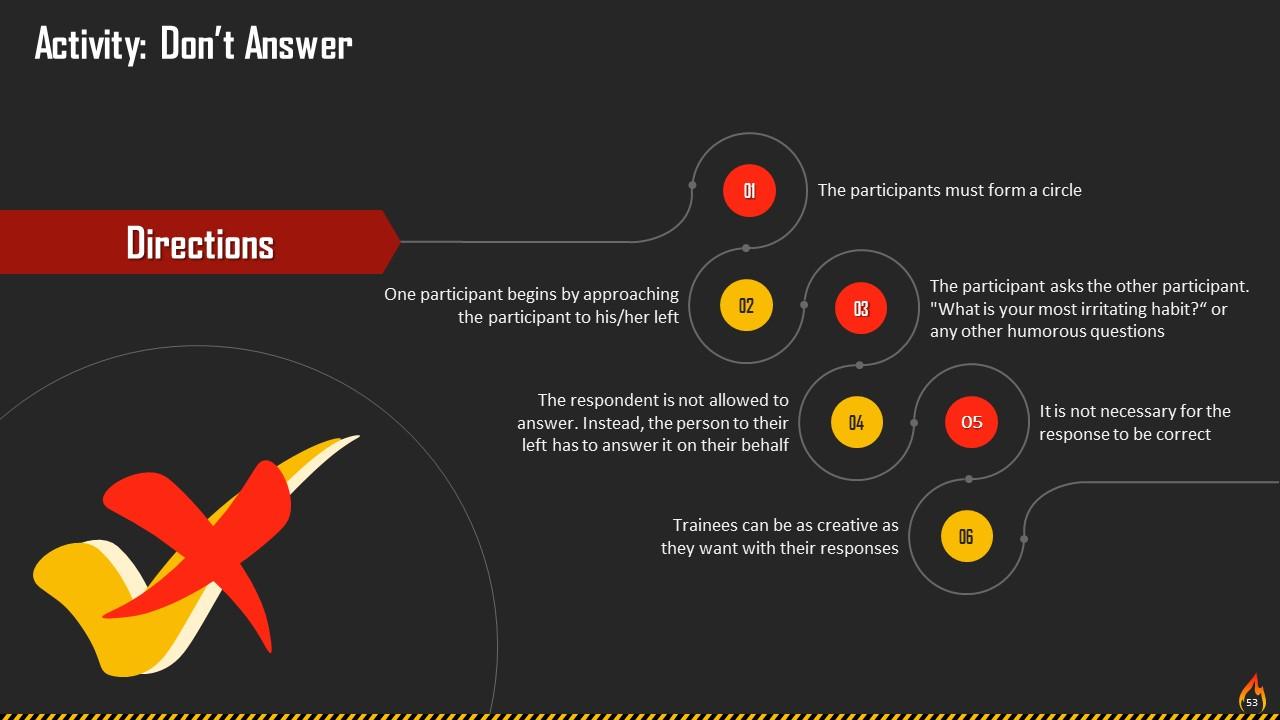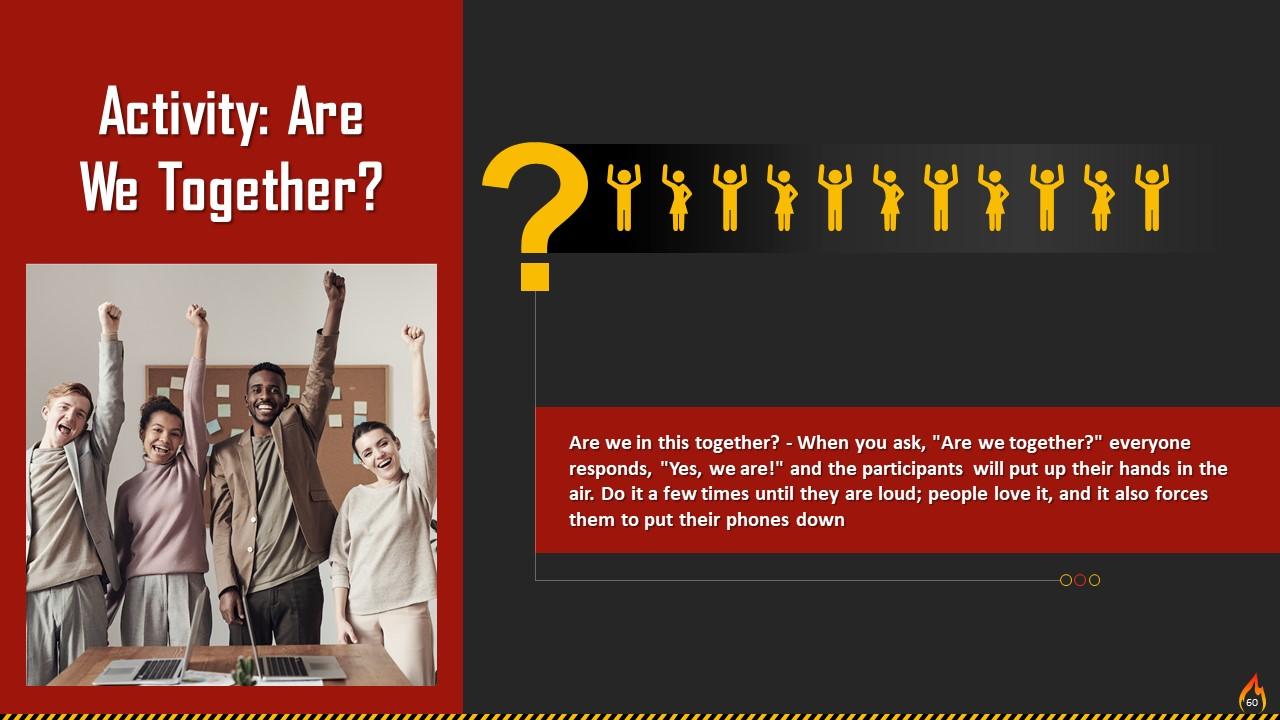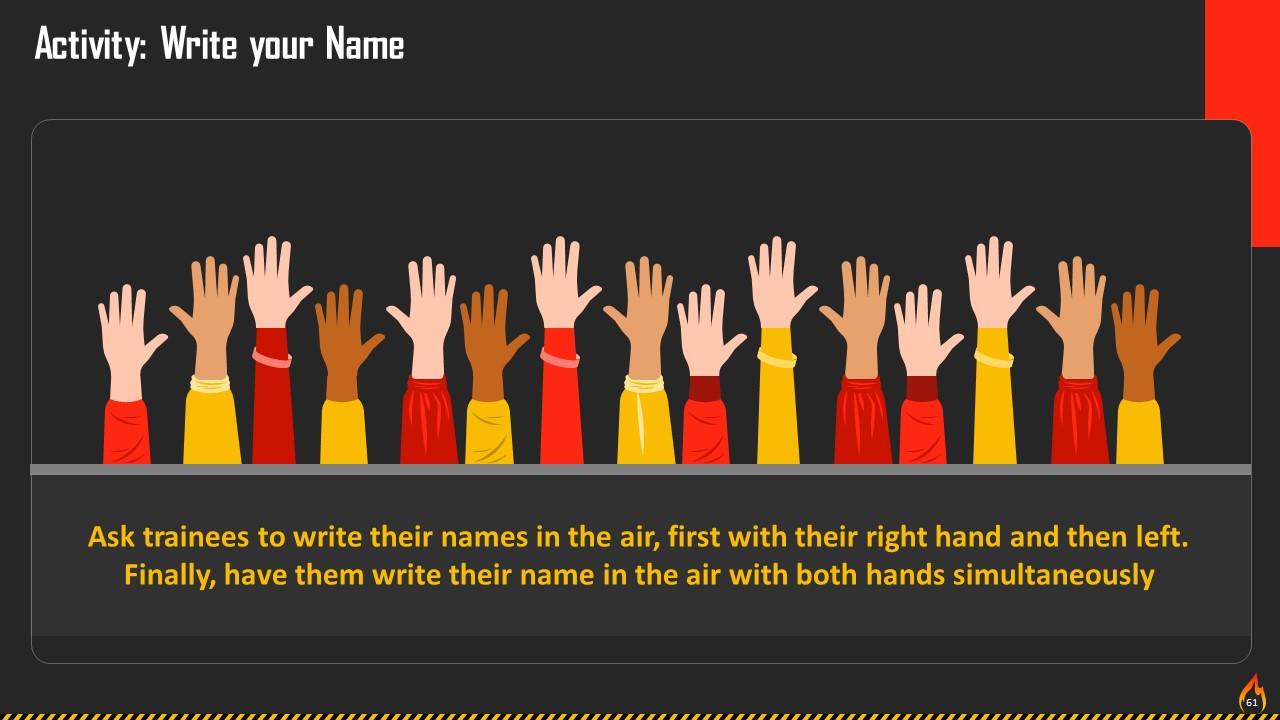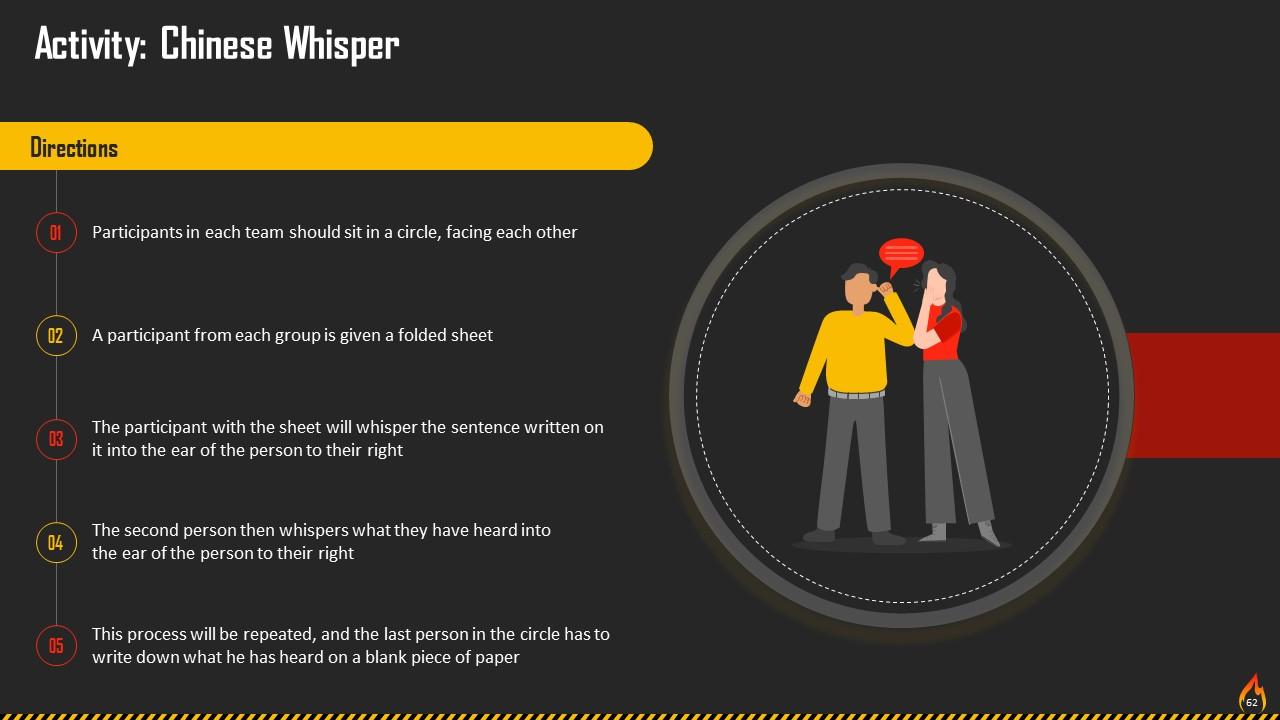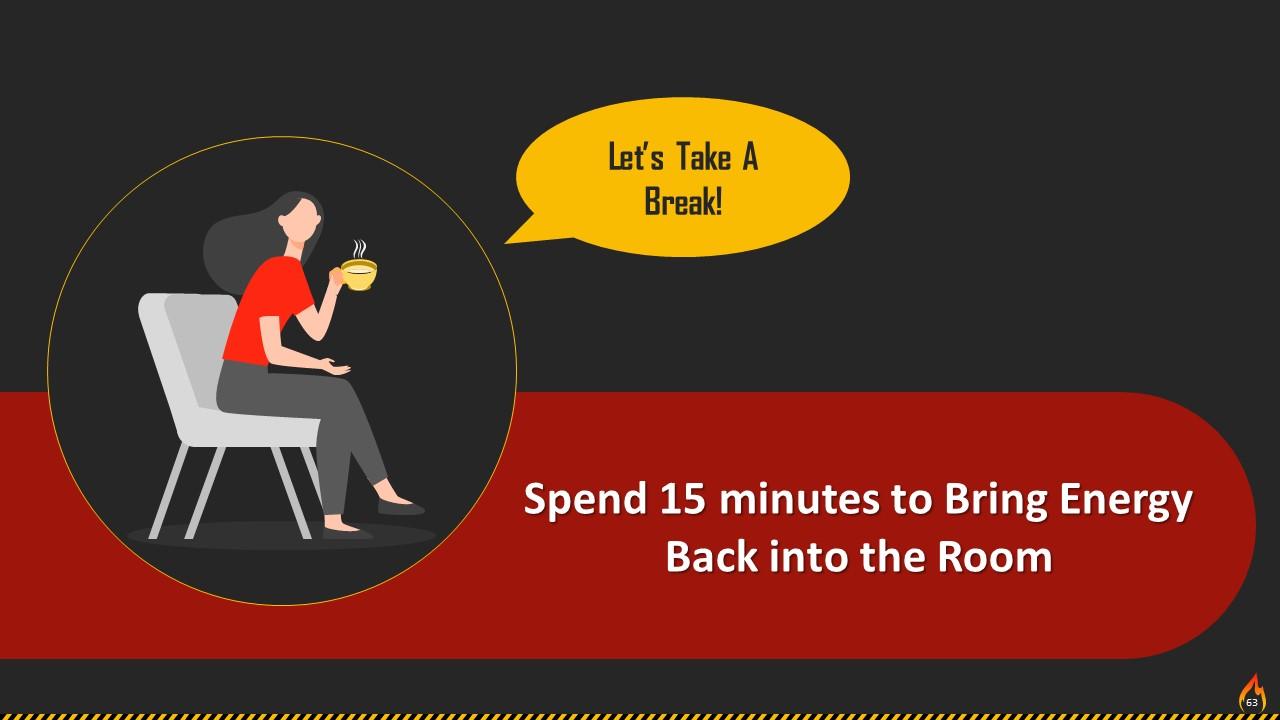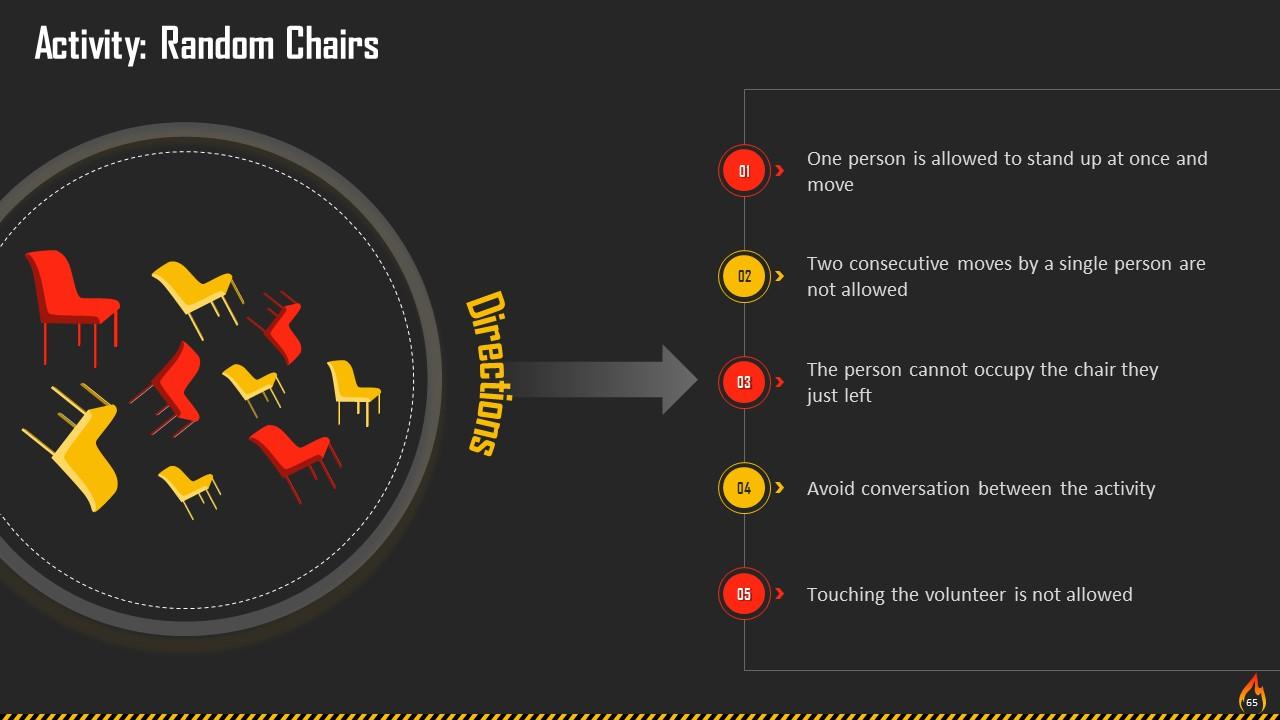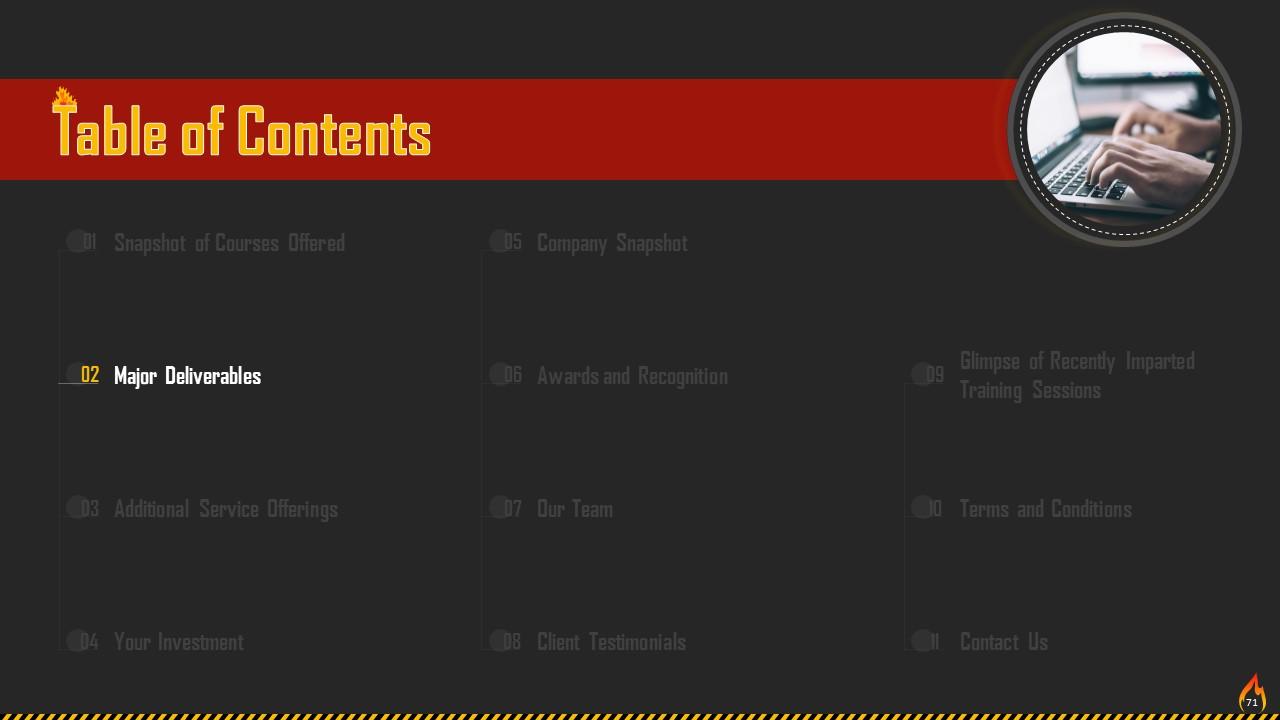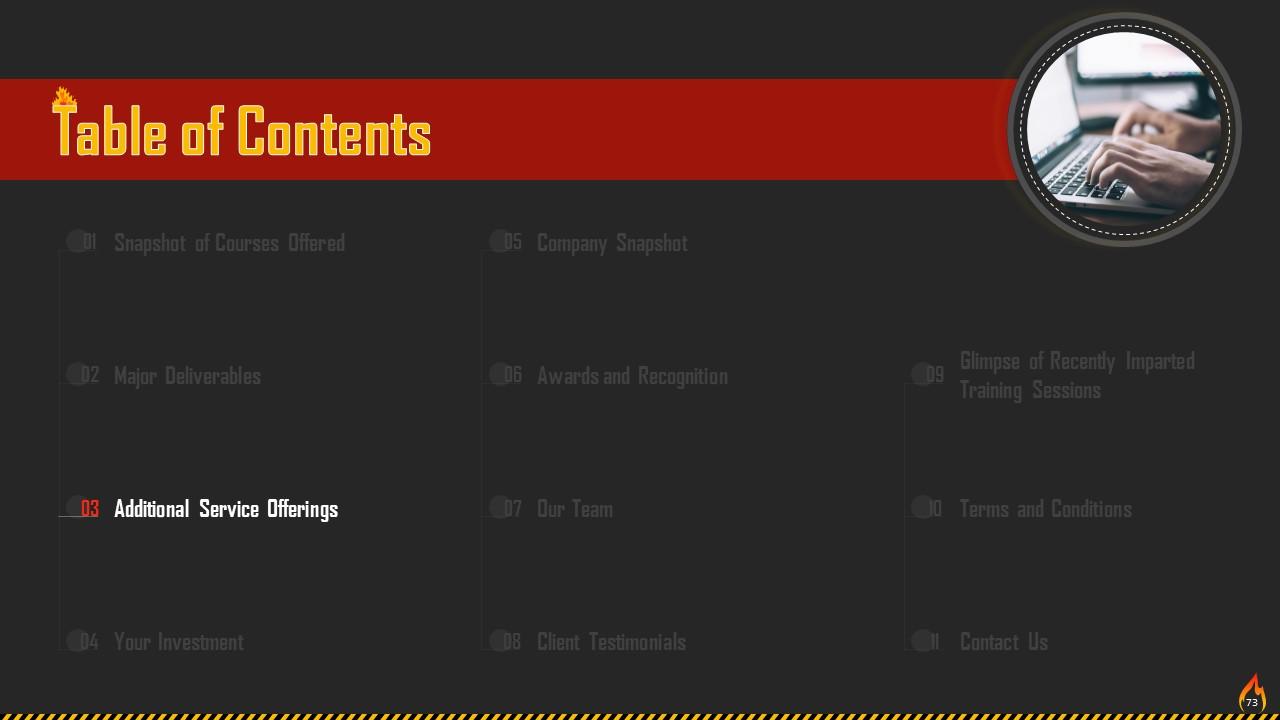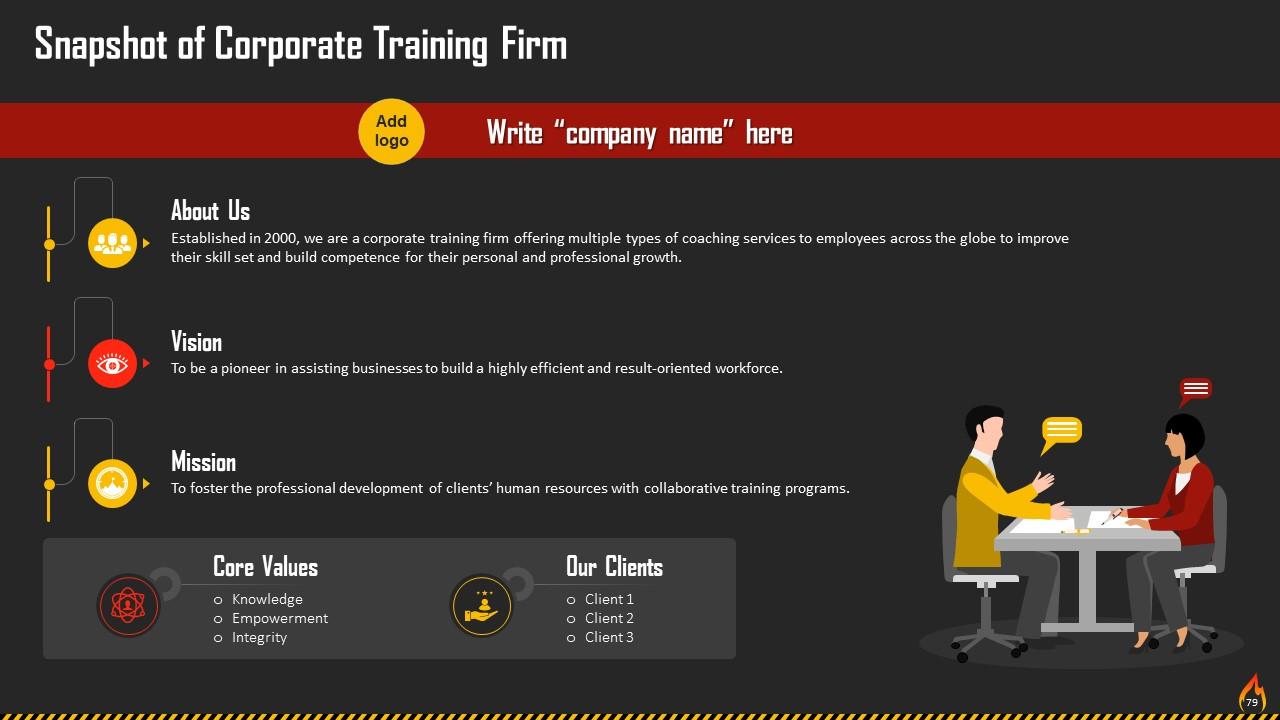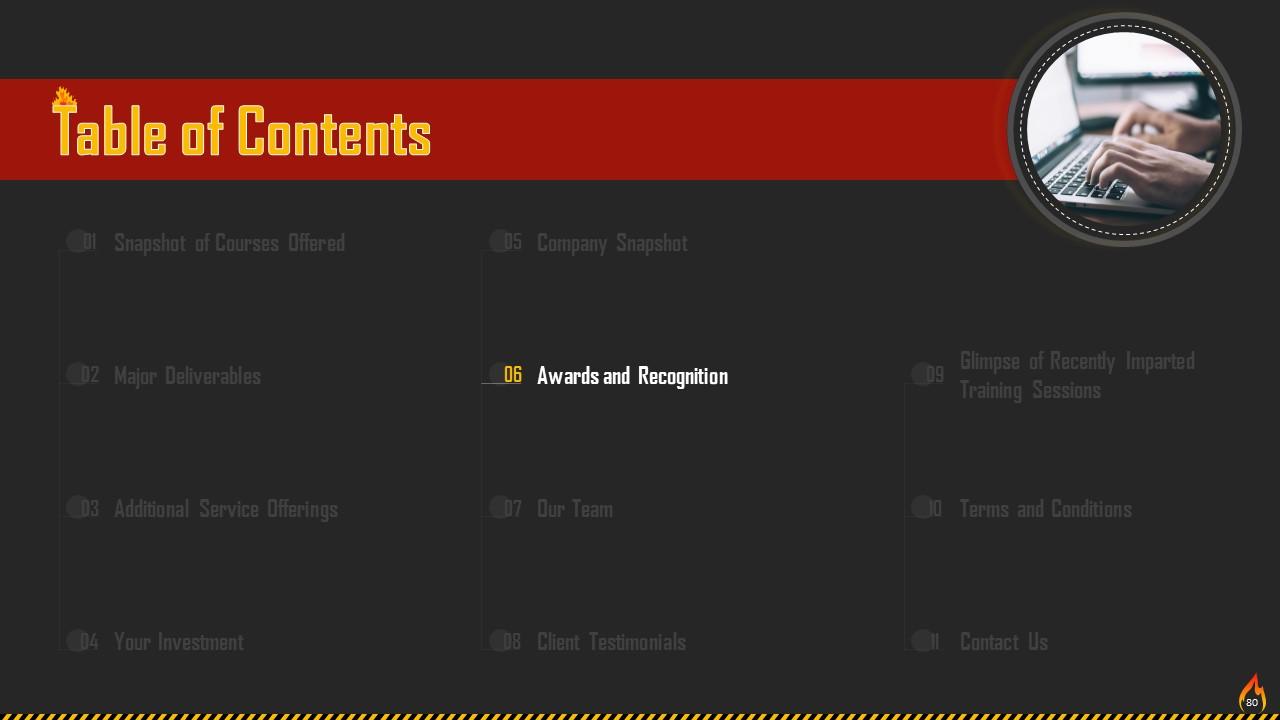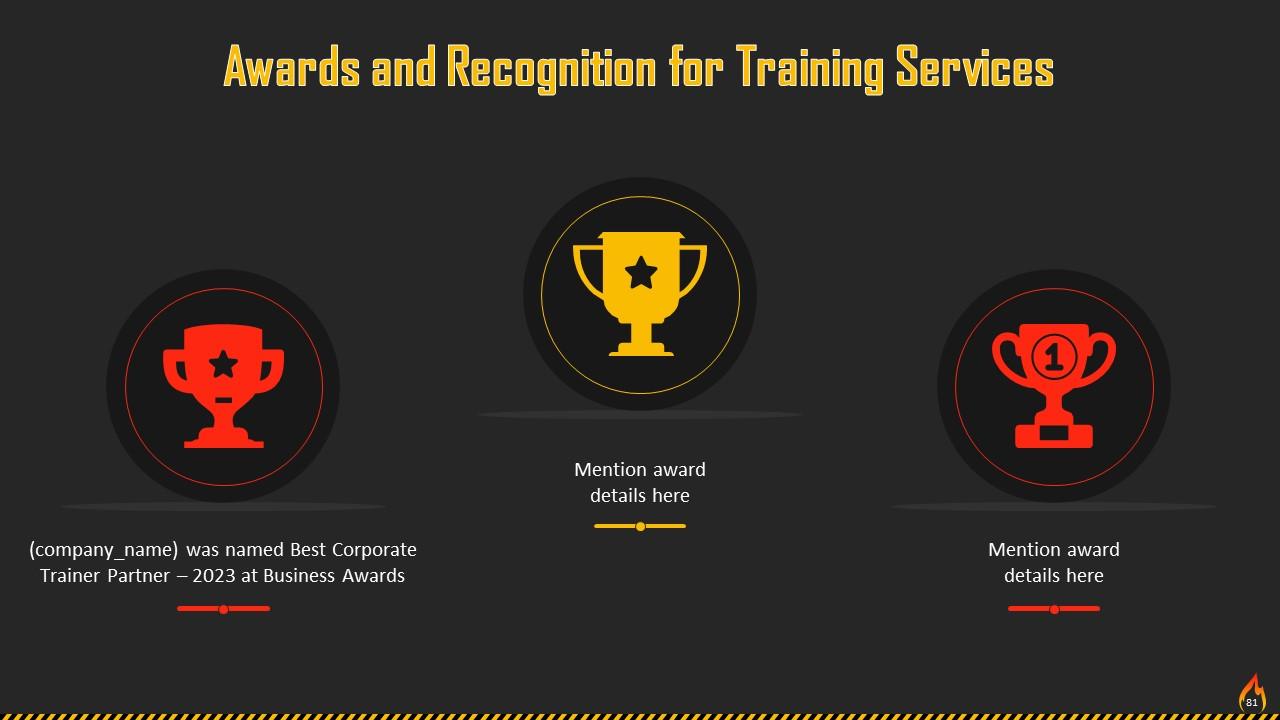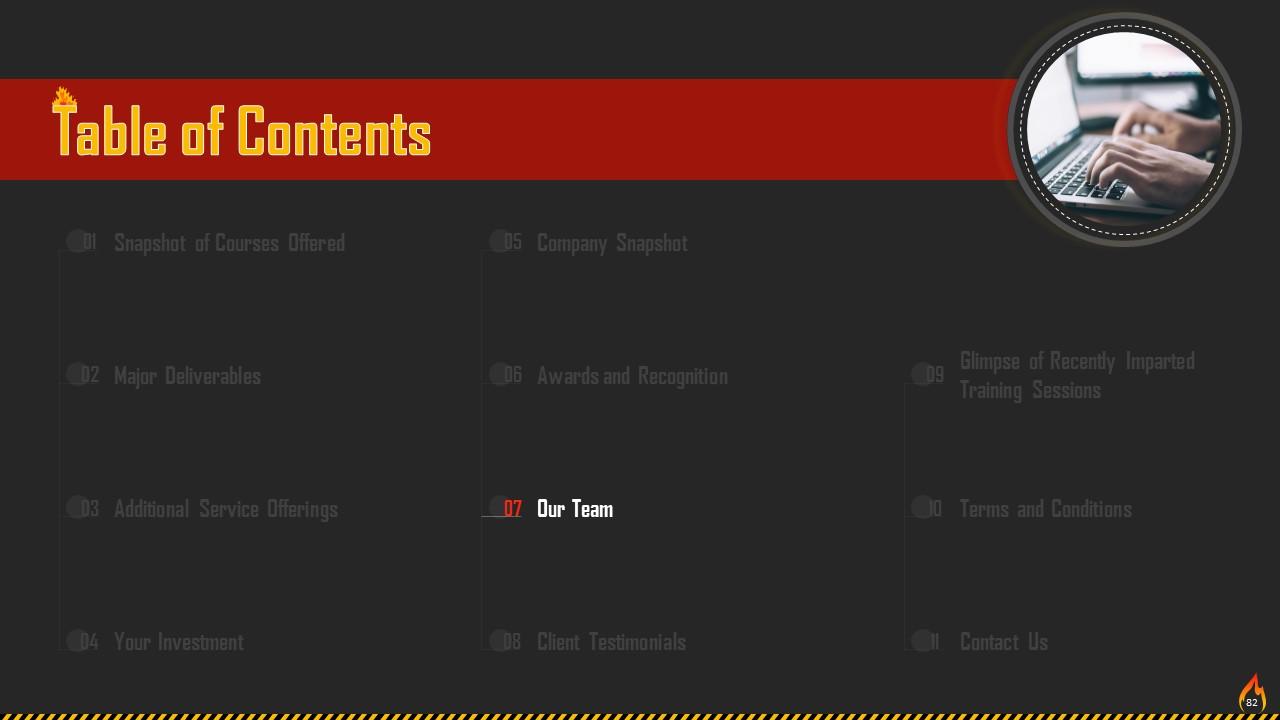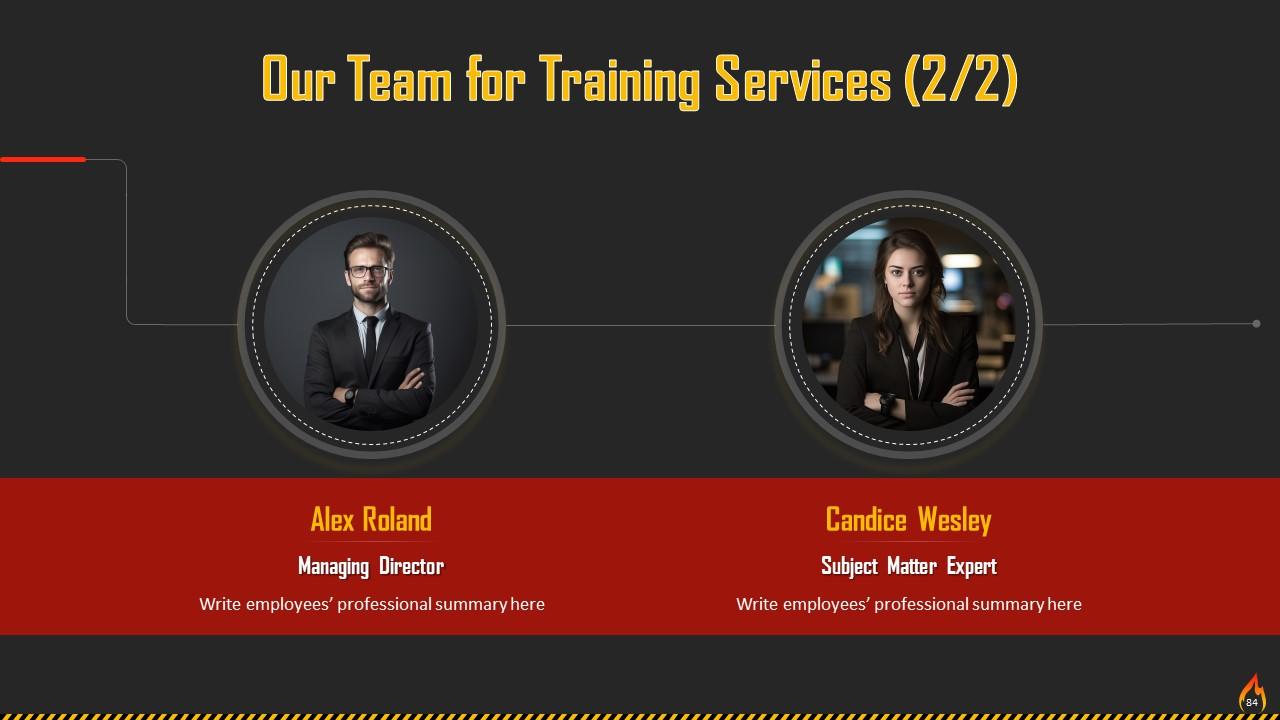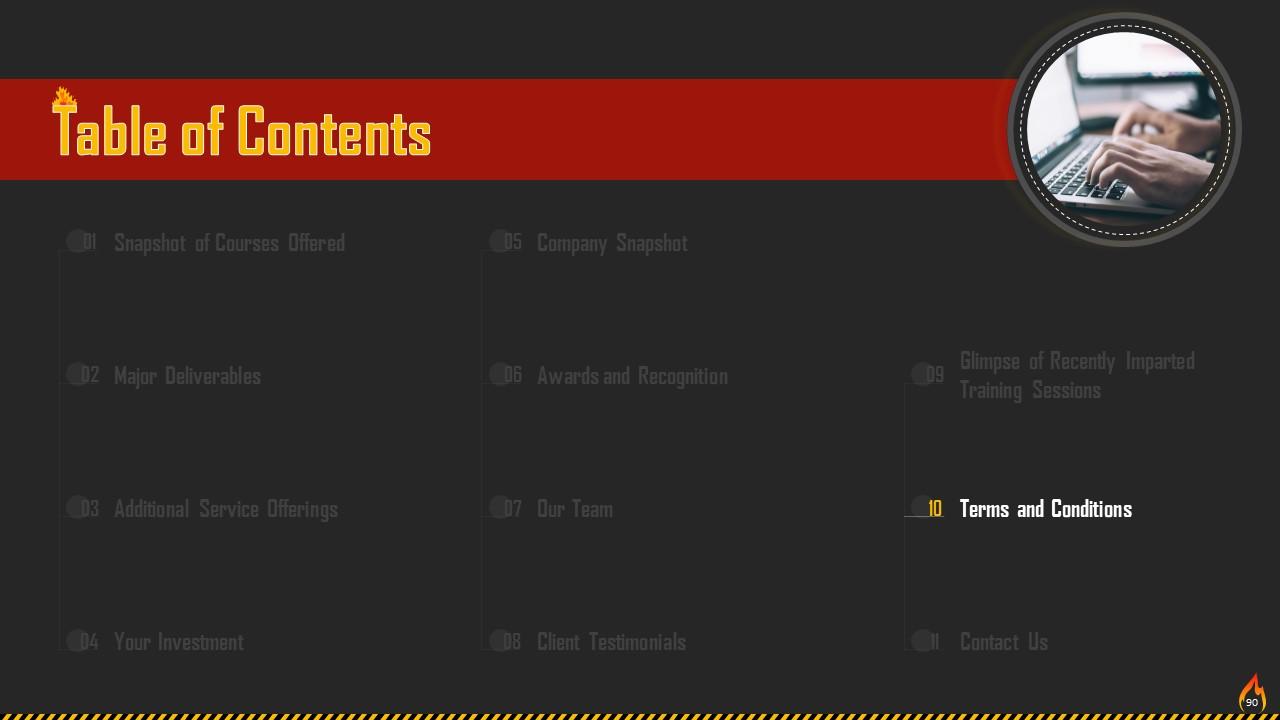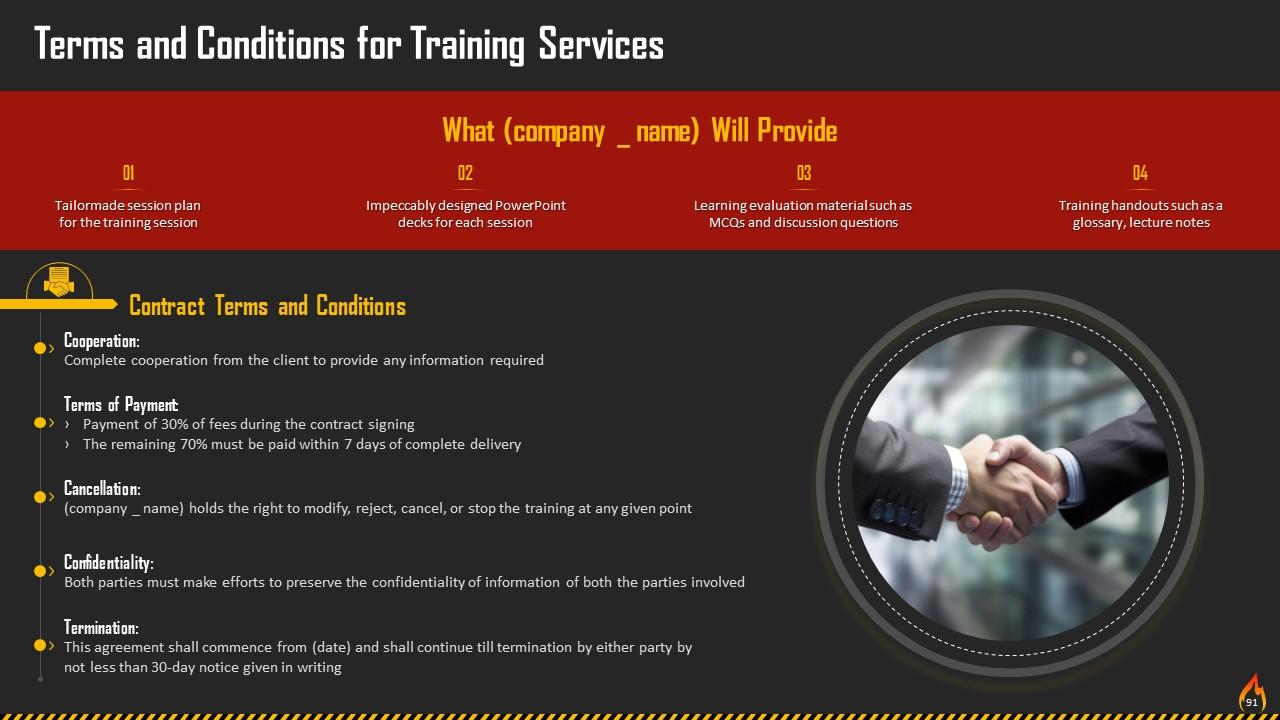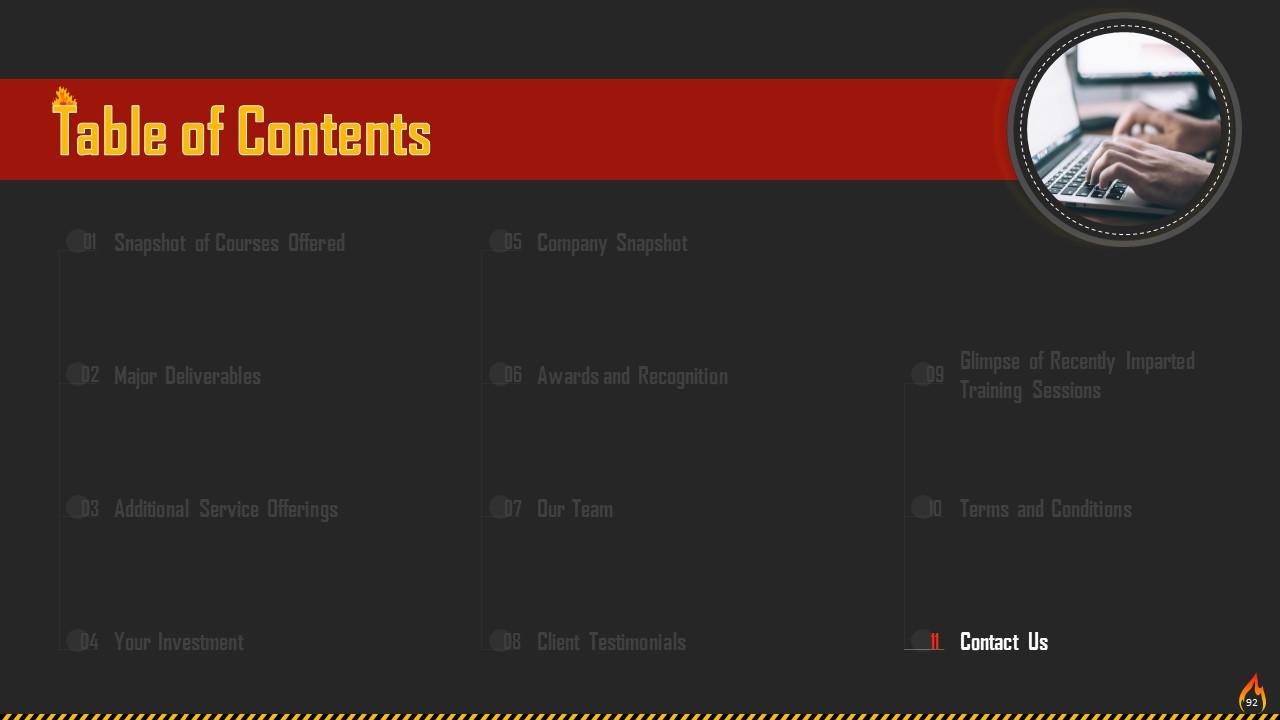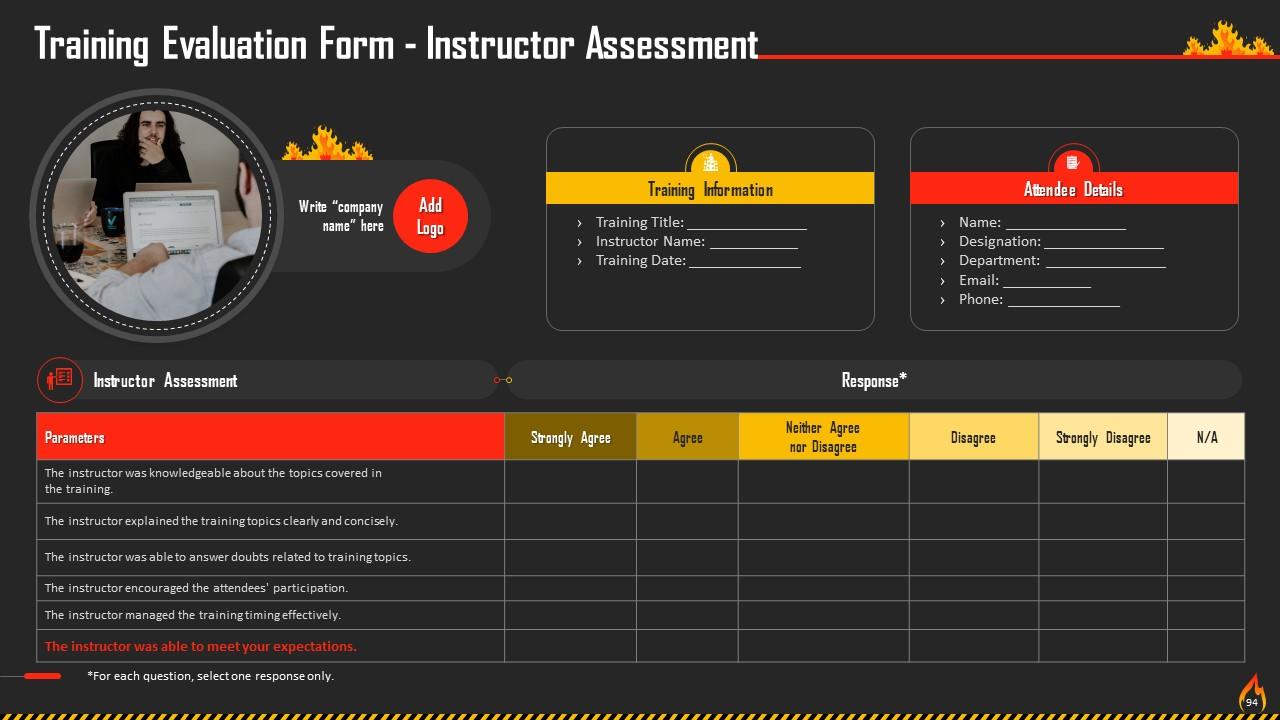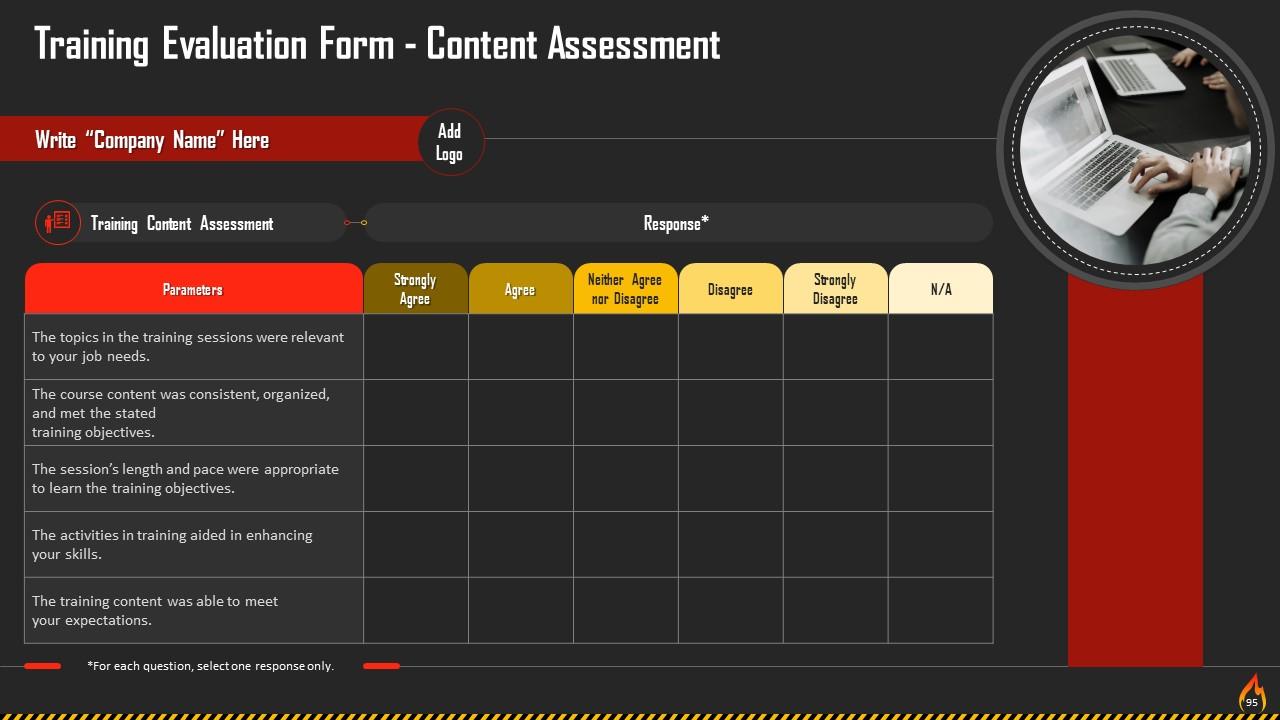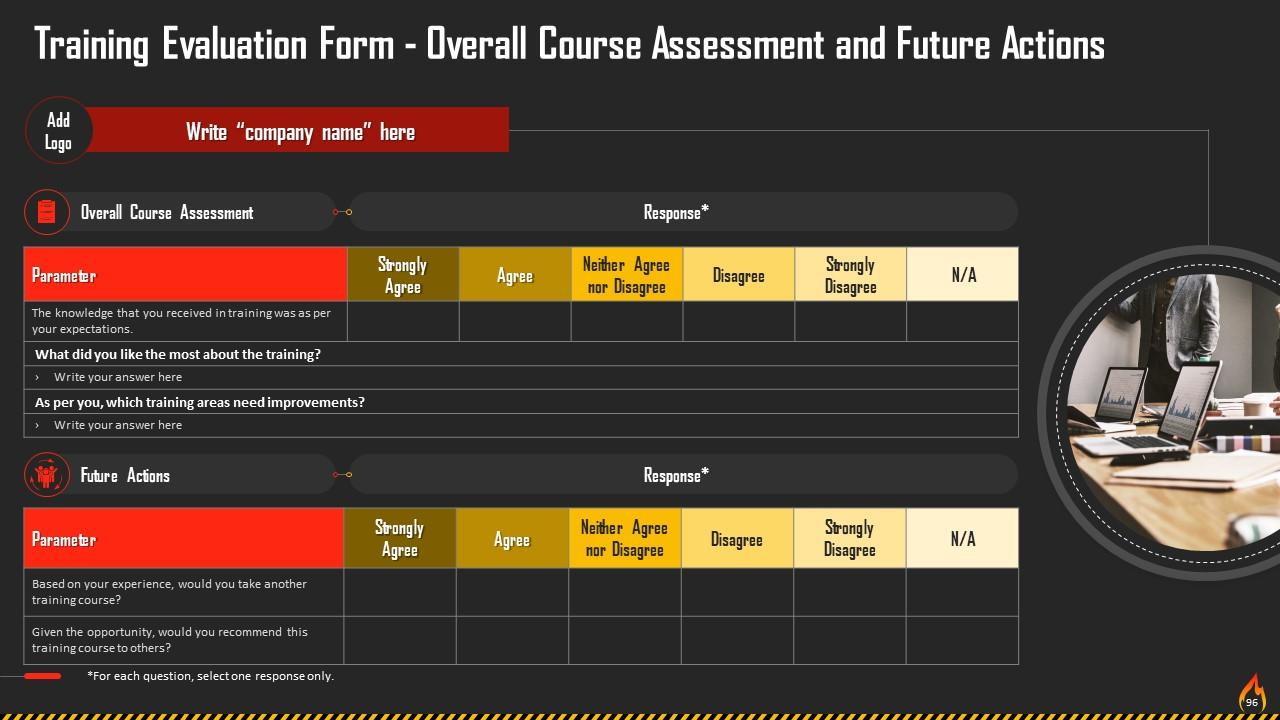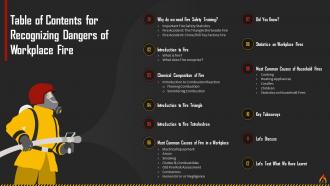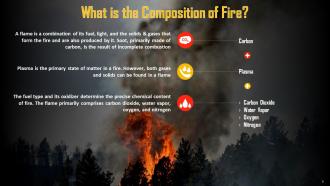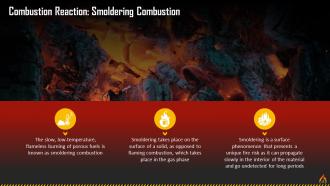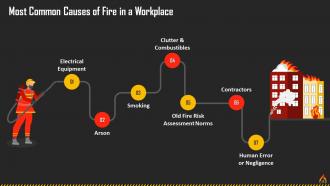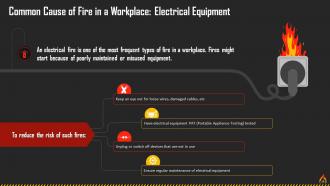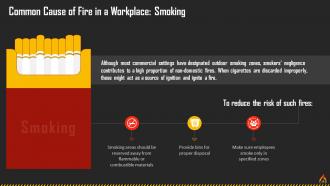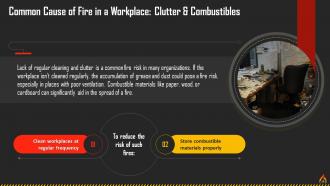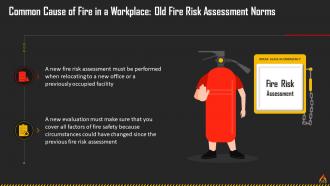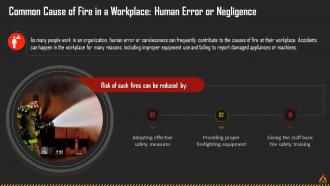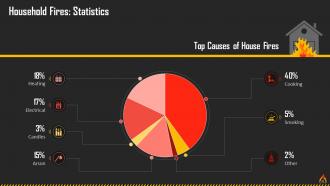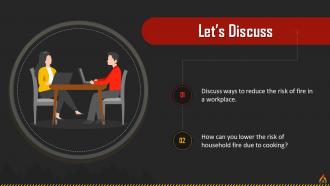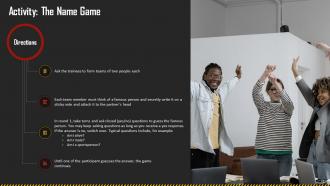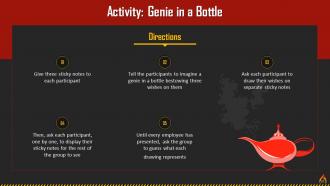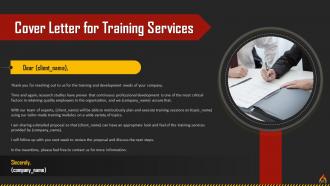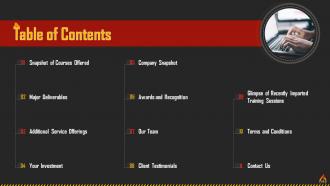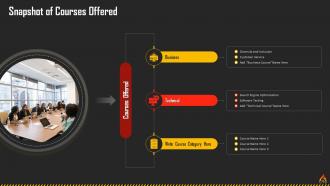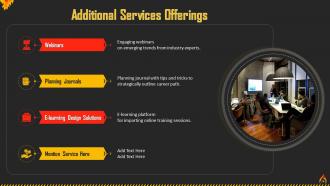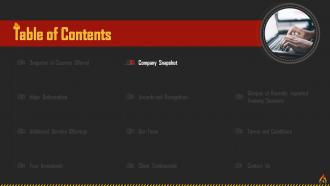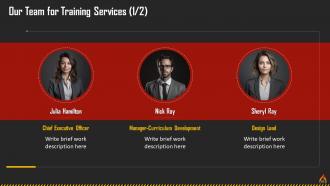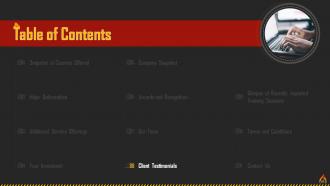Recognizing Dangers Of Workplace Fire Training Ppt
The PPT Training Deck on Recognizing Dangers of Workplace Fire provides an eye-opening and comprehensive guide to understanding and preventing Fire Hazards. With vital Statistics and startling real-life examples such as the Triangle Shirtwaist Fire and the China Zhili Toy Factory Fire, it highlights the importance of Fire Safety Training for employees. It delves deep into the essence of What Fire Is. By covering the concept of Fires Chemical Composition and discussing Combustion Reaction the Flaming and Smoldering Combustion to enable employees to predict and prevent it effectively. The PowerPoint Module also introduces important concepts of the Fire Triangle and Fire Tetrahedron. Further, it reveals the most common Causes of Fire in the Workplace, from Electrical Equipment Malfunction to Human Negligence, to enable employees to control these factors to Prevent a Fire from happening. It also discusses the most common Causes of Household Fires, including Cooking, Heating Appliances, Candles, and even Children. It also has Key Takeaways and Discussion Questions related to the topic to make the training session more interactive. The deck contains PPT slides on About Us, Vision, Mission, Goal, 30-60-90 Days Plan, Timeline, Roadmap, Training Completion Certificate, Energizer Activities, Client Proposal, and Assessment Form.
The PPT Training Deck on Recognizing Dangers of Workplace Fire provides an eye-opening and comprehensive guide to understan..
- Google Slides is a new FREE Presentation software from Google.
- All our content is 100% compatible with Google Slides.
- Just download our designs, and upload them to Google Slides and they will work automatically.
- Amaze your audience with SlideTeam and Google Slides.
-
Want Changes to This PPT Slide? Check out our Presentation Design Services
- WideScreen Aspect ratio is becoming a very popular format. When you download this product, the downloaded ZIP will contain this product in both standard and widescreen format.
-

- Some older products that we have may only be in standard format, but they can easily be converted to widescreen.
- To do this, please open the SlideTeam product in Powerpoint, and go to
- Design ( On the top bar) -> Page Setup -> and select "On-screen Show (16:9)” in the drop down for "Slides Sized for".
- The slide or theme will change to widescreen, and all graphics will adjust automatically. You can similarly convert our content to any other desired screen aspect ratio.
Compatible With Google Slides

Get This In WideScreen
You must be logged in to download this presentation.
PowerPoint presentation slides
Presenting Training Deck on Recognizing Dangers of Workplace Fire. This deck comprises of 96 slides. Each slide is well crafted and designed by our PowerPoint experts. This PPT presentation is thoroughly researched by the experts, and every slide consists of appropriate content. All slides are customizable. You can add or delete the content as per your need. Not just this, you can also make the required changes in the charts and graphs. Download this professionally designed business presentation, add your content, and present it with confidence.
People who downloaded this PowerPoint presentation also viewed the following :
Content of this Powerpoint Presentation
Slide 4
This slide talks about the importance of fire safety training for employees in an organization. Fires can result in significant loss of life and property. Even as such accidents are hard to predict, measures must be taken to reduce the risk of their occurrence. One of the most critical steps is providing regular fire safety training to employees.
Slide 5
This slide depicts important statistics related to fire and safety. Less than 50% of people know how to use a fire extinguisher with confidence. Less than 25% of people know where fire extinguishers are located in their building.
Slide 6
This slide talks about the Triangle Shirt waste Fire Accident that took place in New York in 1911. A fire broke out on floors 8th, 9th, and 10th of an Asch building in Greenwich Village, Manhattan, New York, on March 25, 1911. These three storeys had been included in the Shirtwaist factory. The fire spread quickly due to the highly inflammable fabric that lay scattered around the workplace; the fire department ladders could not reach the 7th floor.
Slide 7
This slide talks about the China Zhili Toy Factory Fire. The factory went up in a raging inferno on the night of November 19, 1993. Friction in the machinery room, which was connected to the material depot, was found to be the source of the fire. Over 100 lives were lost in the tragedy, and about 50 people suffered severe injuries.
Slide 8
This slide gives a definition of fire. In the exothermic chemical reaction (a process in which energy is released) of combustion, fire can be seen as the rapid oxidation of a substance (the fuel), releasing heat, light, and other byproducts.
Slide 9
This slide tells us what a fire is made up of. A flame is a combination of its fuel, light, and the solids and gases that form the fire and are also produced by it. The fuel type and its oxidizer determine the precise chemical content of the fire.
Slide 10
This slide gives an overview of a combustion reaction. Combustion, also known as burning, is a high-temperature exothermic (heat/energy releasing) reaction.
Slide 11
This slide talks about flaming combustion which is its most common type. In this, the fire burns with an open flame, such as a gas burner, lighter, or candle.
Slide 12
This slide talks about smoldering combustion. The slow, low-temperature, flameless burning of porous fuels is known as smoldering combustion. It takes place on the surface of a solid, as opposed to flaming combustion, which takes place in the gas phase
Slide 13
This slide introduces the concept of a fire triangle. The combustion triangle or fire triangle, is a model for understanding the necessary elements of most fires. The triangle represents the three components that are necessary to ignite a fire. These are heat, fuel, and an oxidizing agent.
Slide 14
This slide introduces the concept of the Fire Tetrahedron. It indicates the addition of one more element to the fire triangle's three existing ones: a chemical chain reaction.
Instructor’s Notes:
- Foam can be used to cut off the fire's oxygen supply. Water to remove or disperse the fuel, reduce the fuel's temperature below the ignition point, or both
- To directly address the chemical reaction causing the fire, halon can be used to eliminate free radicals and build a barrier of inert gas
Slide 15
This slide lists the most common causes of fire in a workplace. These fires can be caused by electrical equipment, arson, smoking, clutter & combustibles, old fire risk assessment norms, contractors, and human error or negligence.
Slide 16
This slide talks about electrical equipment as a common cause of fire in a workplace. An electrical fire is one of the most frequent types of fire in the workplace. Fires might start because of poorly maintained or misused equipment.
Slide 17
This slide talks about arson as a common cause of fire in a workplace. Arson is a common and major reason for fires in commercial buildings. The impact on a business due to such malicious behavior can be devastating.
Slide 18
This slide talks about smoking as a common cause of fire in a workplace. Although most commercial settings have designated outdoor smoking zones, smokers' negligence contributes to a high proportion of non-domestic fires.
Slide 19
This slide talks about clutter and combustibles as a common cause of fire in a workplace. Lack of regular cleaning and clutter is a common fire risk in many organizations. If the workplace isn't cleaned regularly, the accumulation of grease and dust could pose a fire risk, especially in places with poor ventilation.
Slide 20
This slide talks about old fire risk assessment norms as a common cause of fire in a workplace. A new fire risk assessment must be performed when relocating to a new office or a previously occupied facility.
Slide 21
This slide talks about contractors as a common cause of fire in a workplace. Hot work originates from building or maintenance tasks that produce sparks, heat, or flame, which could result in a fire.
Slide 22
This slide talks about contractors as a common cause of fire in a workplace. Hot work originates from building or maintenance tasks that produce sparks, heat, or flame, which could result in a fire.
Slide 24
This slide highlights some important facts about fires in the workplace. Most fires break out at night, although these start during office hours. During construction or maintenance projects, massive fires result from misuse of electrical equipment or appliances.
Slide 25
This slide illustrates statistics relating to fires at the workplace. Electrical malfunctions account for 18% of warehouse fires. 31% of office fires take place between 7pm and 7am and cause about 67% of property damage.
Slide 26
This slide lists the most common causes of household fires. In addition to the causes of fire at a workplace that we have already studied, household fires are set off due to reasons that seem innocuous. Everyday ordinary activities lead to major infernos in households as people tend to be careless or negligent about these causes.
Slide 27
This slide talks about cooking-related fires in a household. Unattended cooking is the main reason for household fires. They are generally caused by grease overheating in an oven or stove.
Instructor’s Notes: Grease is highly flammable, and when it reaches a specific temperature, it can spontaneously ignite even without coming in contact with a flame. It is quite difficult to put out grease fires.
Slide 28
This slide talks about household fires due to heating appliances. Heating and cooling equipment is the second most common cause of household fires. A fire can break out when fabrics or other kinds of combustibles are left too close to space heaters or baseboard heaters.
Slide 29
This slide talks about household fires that unattended candles cause. Candles have open flames and can easily tip over, resulting in a fire. Matches and lighters used to light candles can also be dangerous if left within a child's reach.
Slide 30
This slide talks about household fires that children cause. Children may start fires accidentally or out of curiosity. If you discover matches or lighters in their possession or room, smell Sulphur in their surroundings, or locate toys or other personal items that appear melted or singed, they might be engaging in fire play.
Slide 31
This slide depicts the causes of household fires as a pie-chart. Cooking is the leading cause of household fires accounting for about 40%. Heating contributes to 18% and electrical causes cause 17% of these fires.
Slide 50 to 65
These slides contain energizer activities to engage the audience of the training session.
Slide 66 to 93
These slides contain a training proposal covering what the company providing corporate training can accomplish for the client.
Slide 94 to 96
These slides include a training evaluation form for instructor, content and course assessment.
Recognizing Dangers Of Workplace Fire Training Ppt with all 101 slides:
Use our Recognizing Dangers Of Workplace Fire Training Ppt to effectively help you save your valuable time. They are readymade to fit into any presentation structure.
-
Presentation Design is very nice, good work with the content as well.
-
Understandable and informative presentation.


